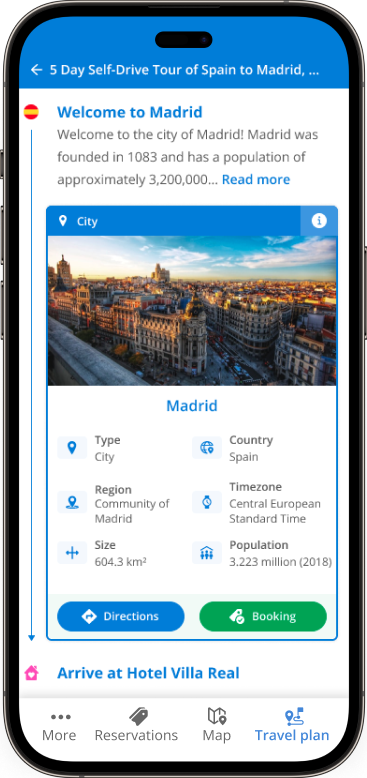
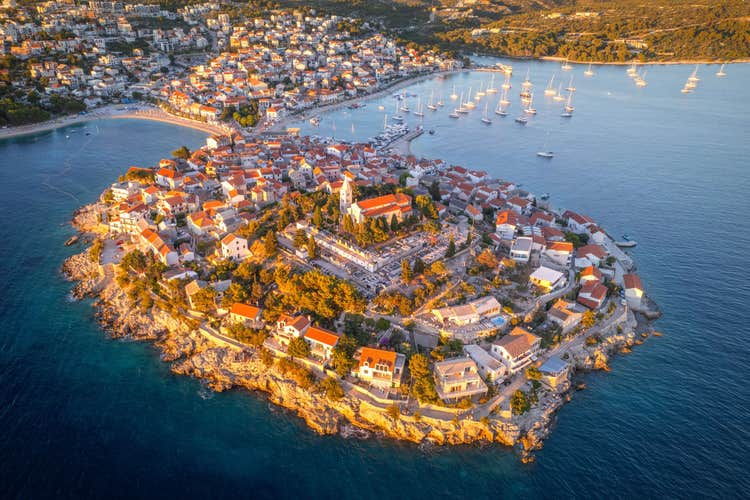
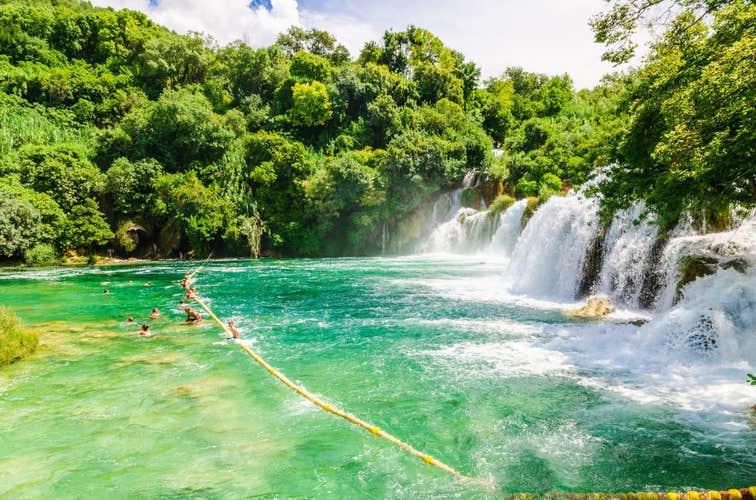
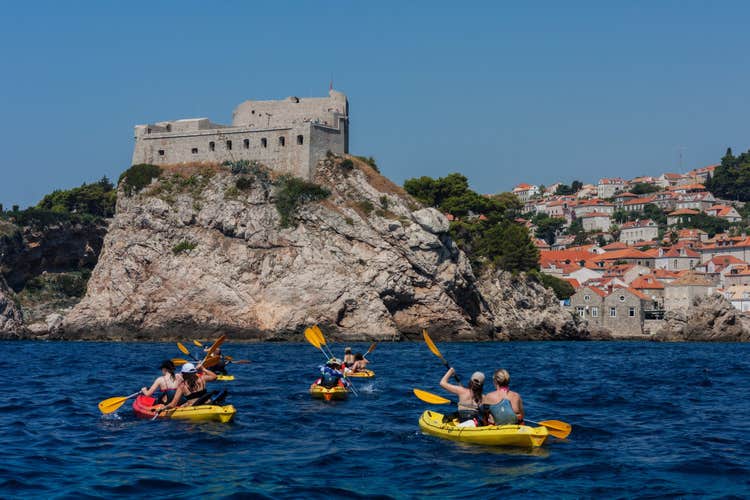

Find out the best time to visit the Dalmatian Coast in Croatia, where stunning islands and historic cities await. Explore the top Dalmatian islands for each season, find the best months for cruising, and gather essential travel tips to make the most of your trip.
The Dalmatian Coast is a unique destination in Croatia, where rugged mountains and cliffs meet the sea. This region captivates millions of visitors yearly with its sun-kissed islands, beautiful beaches, charming port towns, and hidden treasures.
In Northern Dalmatia, cities like Zadar and Sibenik charm with stunning national parks. Move to Central Dalmatia, and you'll find Split, one of Croatia's must-visit cities. Meanwhile, Southern Dalmatia is home to the party island of Hvar and the historic charm of Dubrovnik. To soak in everything Dalmatia has to offer, renting a car is the best way to explore.
City tours in Dubrovnik’s Old Town, exciting boat tours from Split, and laid-back beach vacations in Dalmatia are just a few of the endless activities waiting for you. To secure affordable flights and top-rated accommodations in Dalmatia, plan to book three to six months in advance.
With so much to explore, knowing the best time to visit the Dalmatian Coast is important. Read on to get more information and insider tips to help you plan your trip to Dalmatia.
Knowing the Best Time To Visit the Dalmatian Coast
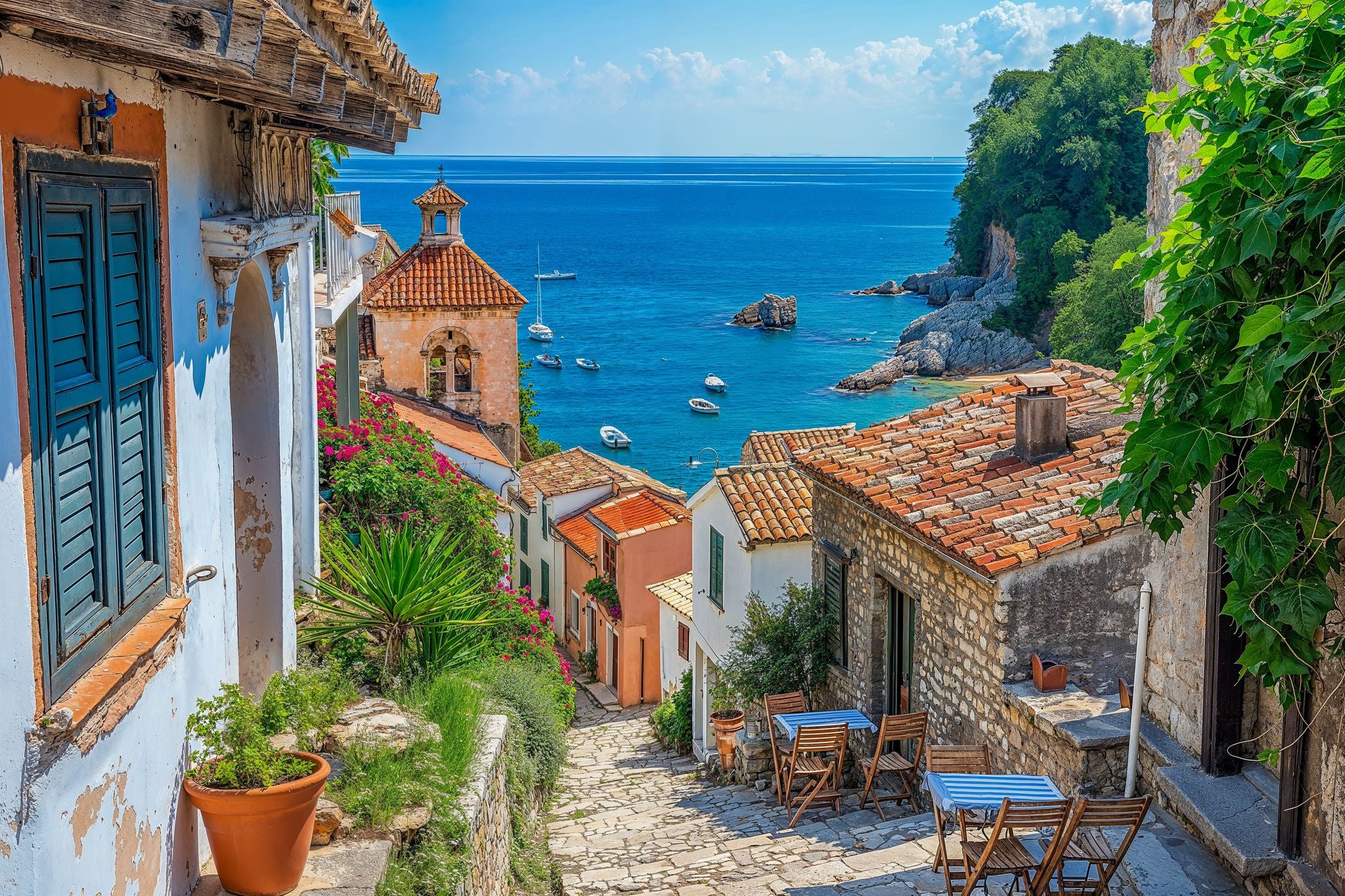
The best time to visit the Dalmatian Coast depends on what activities you want on your Croatian adventure. Here's a guide to help you pick the perfect season in Dalmatia:
- Consider Your Interests: What’s your idea of the perfect getaway? If you’re all about lounging on the beach, then summer (July to August) is when to visit Dalmatia. But if you’re more into exploring historical sites and the outdoors, spring (April to June) and fall (September to October) offer ideal weather without the summer rush.
- Research events and festivals: Soak in the local culture and time your visit during the lively music festivals in Split to the famous Dubrovnik Summer Festival.
- Factor in Your Budget: Do you prefer a luxurious escape or a more budget-friendly adventure? Summer brings the highest prices, while shoulder and off seasons (except for the holidays in December) offer better deals on accommodation and flights.
- Tolerance to Crowds: If you don’t mind bustling streets and lively beaches, summer is ideal. For a mix of activity and relaxation, the best time to visit the Dalmatian Coast is the shoulder season (April-June, September-October). Meanwhile, the low season in Dalmatia (November-March) lets you explore without the crowds.
- Local experiences: Some experiences on the Dalmatian Coast are season-specific, like enjoying the region’s wine harvest in autumn or seeing Krka National Park in full bloom during spring.
By considering your interests, budget, and tolerance to crowds, you can choose the best time to visit the Dalmatian Coast. Read more to discover detailed seasonal experiences and essential travel tips for making the most of your trip to this stunning coastal region.
Seasons on the Dalmatian Coast

Summer (June to August) is the go-to season for many, but the best time to visit the Dalmatian Coast is from May and September to October. You’ll still get those hot, sunny days but with crowd-free beaches. May and September are also the best times to visit the Dalmatian Islands for sailing tours in Croatia.
However, the Dalmatian Coast remains a popular destination year-round. From the sun-drenched days at Golden Horn Beach in Brac to the crisp air and beautiful autumn colors in Krka National Park, each season paints the coastline with its magic.
If you love relaxing on the beach, exploring ancient cities, or going on exciting hikes, timing your trip can make all the difference. Keep reading for the best time to travel to the Dalmatian Coast, complete with a seasonal breakdown and insider tips.
Why Visit Dalmatia in Spring?
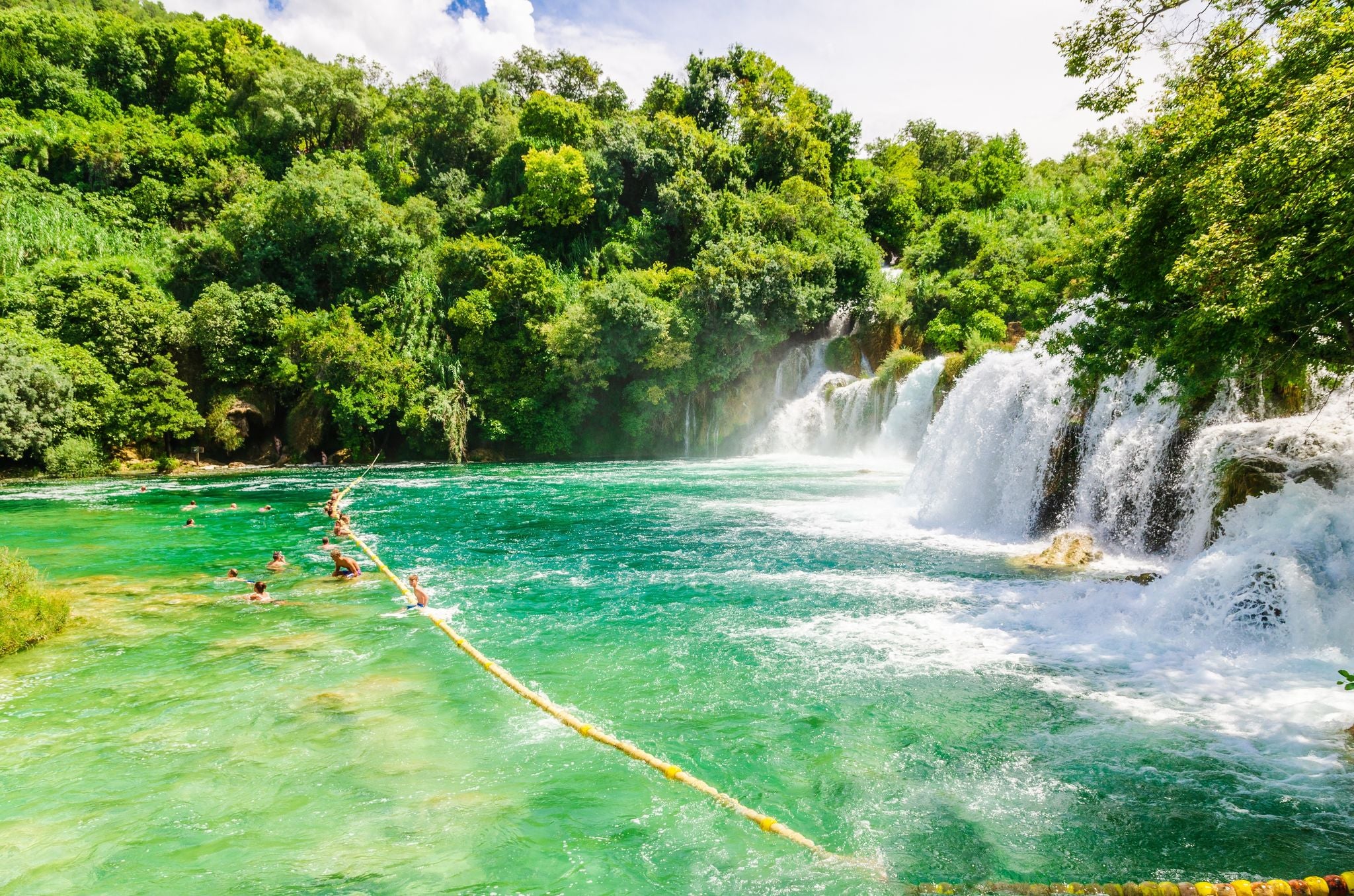
Spring (March to May) is the best time to visit the Dalmatian Coast. The weather is warm, the streets are uncrowded, and the region is blooming with red poppies and purple Croatian irises.
While it might be a bit early for swimming, spring is the best season to visit Dalmatia for hiking Vidova Gora in Brac, exploring Krka National Park, or biking around the lavender fields on the island of Hvar. By May, you can enjoy the warm weather by going on beach vacations in Brela.
Spring is also your ticket to exciting city explorations in Split and Dubrovnik without the usual summer crowds. You can explore Dubrovnik’s Old Town or get lost in the history of Split’s Diocletian Palace at a leisurely pace.
The season’s laid-back charm, stunning scenery, and the sweet scent of blooming flowers make the best time to visit Dalmatia.
The Best Way To See the Dalmatian Coast in Spring
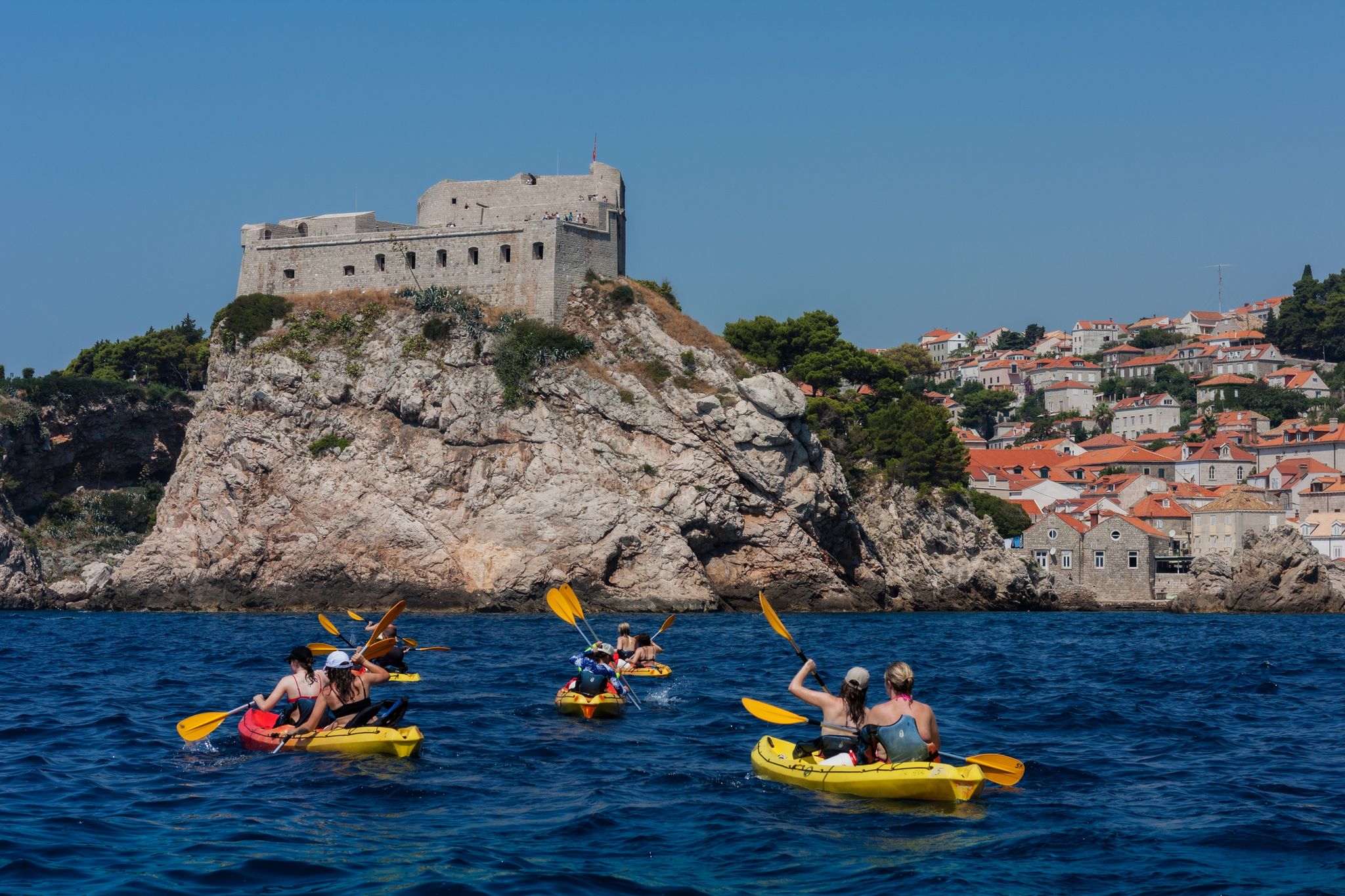
The Dalmatian Riviera is beautiful year-round, but some places shine even brighter in spring. For active outdoor activities in Split and relaxing walking tours in Zadar, spring (March to May) is the best time to visit the Dalmatian Coast. Here’s a look at what you can do on the Dalmatian Coast during this time of year:
Discover Croatia’s natural side
Spring is the best season to visit the Dalmatian Coast for the blooming national parks, calm lakes, and stunning river valleys. Visit the saltwater lakes and peaceful trails in Mljet National Park or tour Plitvice Lakes National Park’s lakes, diverse flora, and fauna during spring.
Indulge in fresh seafood
The abundance of fresh seafood during spring makes it the best time to visit the Dalmatian Islands. If you enjoy dining by the sea, this is the time to sample dishes like black risotto or grilled octopus in towns like Split, Dubrovnik, and Zadar.
Enjoy outdoor adventures
Bike scenic trails among the lavender fields of Hvar island, try sea kayaking in Dubrovnik, or test your nerves with rafting and cliff jumping in Cetina Canyon near Omis. The best part? The trails and water are far less crowded than in the summer, so you can enjoy the experience.
Take an Early Dip in the Adriatic Sea
To enjoy the Adriatic Sea before the summer rush, the best month to visit the Dalmatian Coast is May. The pebbled Golden Horn Beach and pin-up Golden Horn Beach on Brac Island are less crowded, giving you a peaceful and unique experience.
Explore Historical Sites
Spring is the best time to visit the Dalmatian Coast for relaxing city breaks in Dalmatia. In Split, explore the ancient Diocletian's palace, then take a road trip to Trogir and see its Renaissance churches. The mild weather makes it a great time to explore, so don't miss out on fun activities in Dubrovnik to visit Fort Lovrijenac and Stradun.
Festivals and Events on the Dalmatian Coast During Spring
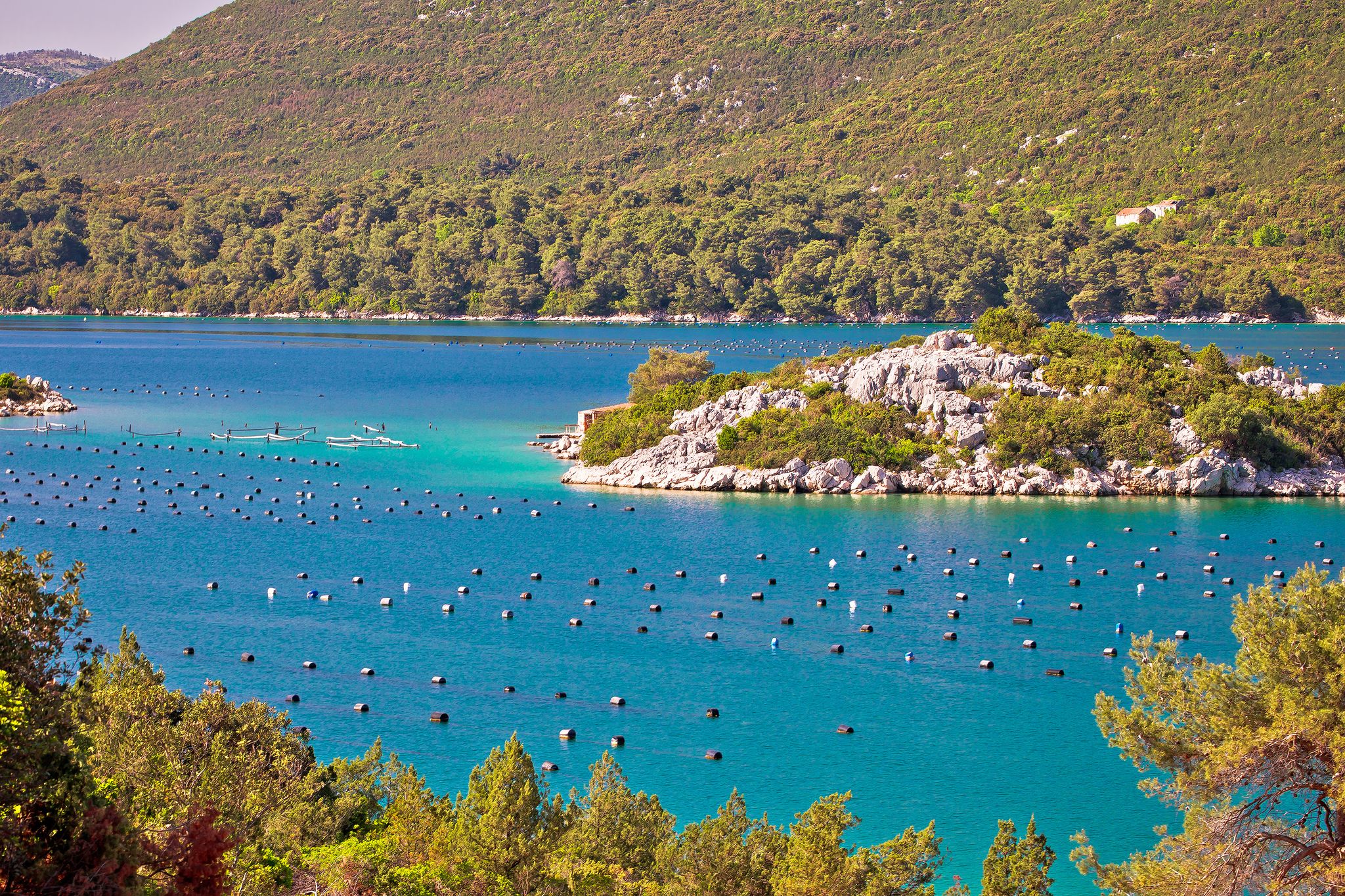
Here are some of the notable festivals and events during spring in Dalmatia:
- Oyster Festival in Ston (Peljesac Peninsula, typically March): Indulge in fresh, delicious oyster dishes paired with local wines. Try your hand at oyster-shucking contests—though it’s trickier than it looks! Add some live music, and you’ve got a perfect day out by the sea.
- Sibenik Food Festival (Sibenik, April): Savor the delectable flavors of the Dalmatian Coast at this culinary celebration. The festival includes cooking demonstrations, workshops, and live entertainment.
- Stari Grad Wine Festival (Hvar, April): This festival celebrates Hvar’s rich winemaking tradition. Sip on local wines, watch traditional grape-stomping demonstrations, and indulge in delicious Croatian cuisine.
- Spring Procession (Gorjani, May): During this event, locals carry a statue of the Madonna through the vineyards, seeking blessings for a bountiful harvest. This procession is a fascinating window into the traditions that have shaped the Dalmatian Coast.
- Makarska Fishermen's Night (Makarska, May): Experience the lively celebration of the sea and local fishing traditions. Enjoy fresh seafood from local fishermen, listen to traditional music, and watch cultural performances that highlight the area’s maritime heritage.
Travel Tips When Visiting the Dalmatian Coast in Spring

Spring is the best time to visit Dalmatia, offering mild weather, fewer crowds, and beautiful blooming landscapes. Here are some essential travel tips to make the most of your spring visit to the Dalmatian Coast:
1. Pack Accordingly
Layered Clothing: Spring weather can vary, with warm days and cooler evenings. Bring layered clothing to stay comfortable throughout the day.
Comfortable Footwear: You’ll likely do a lot of walking, especially in historic towns with cobblestone streets. Comfortable shoes are a must.
Rain Gear: Spring can bring occasional showers, so pack a light rain jacket or umbrella.
2. Book Accommodations Early
Spring Deals: Many hotels and guesthouses offer lower rates in spring compared to the summer peak. Book early to secure the best deals.
Central Locations: Stay in central locations within cities like Dubrovnik, Split, or Zadar for easy access to main attractions and amenities.
Is Summer the Best Time To Visit the Dalmatian Coast?
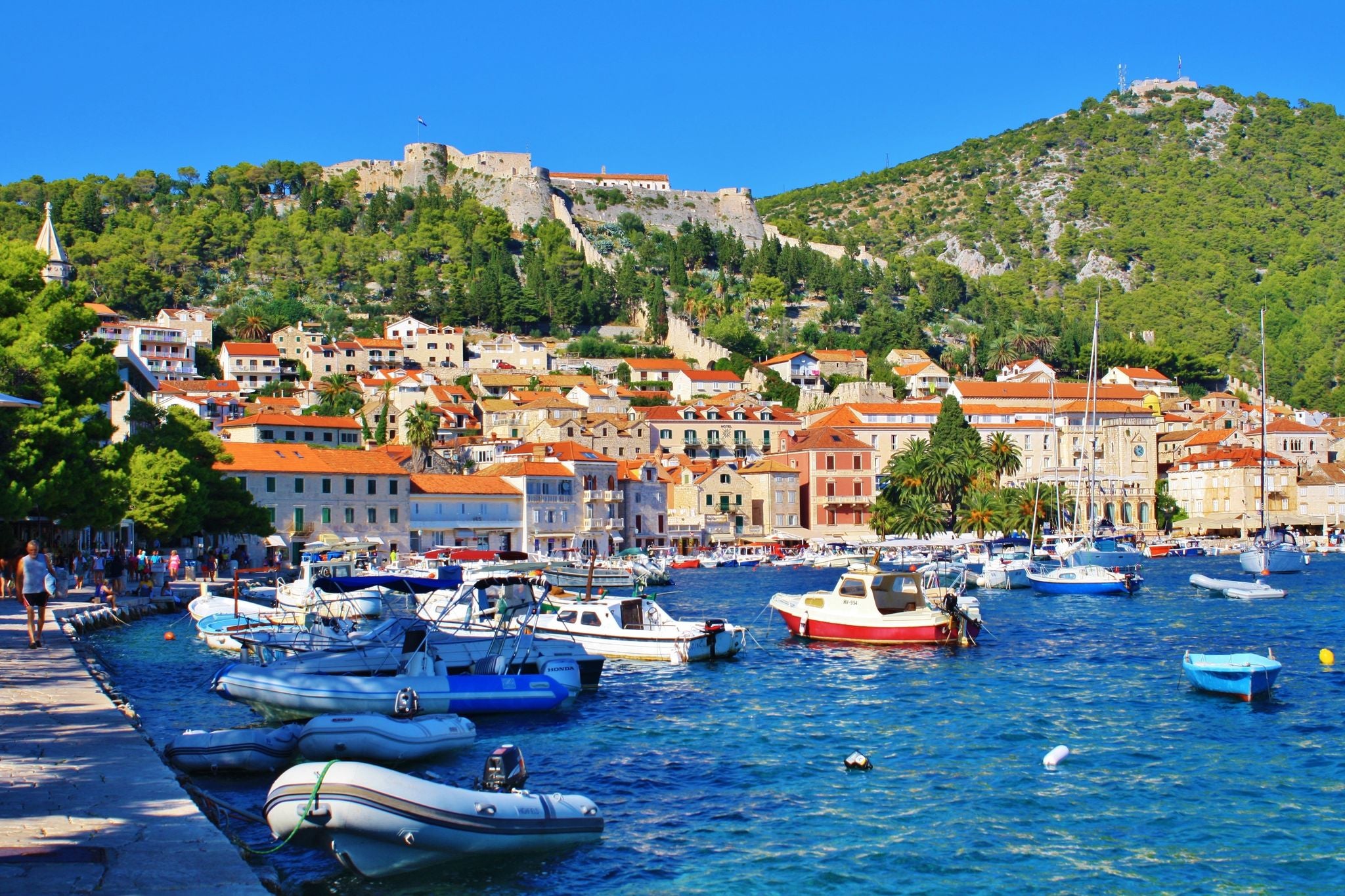
Summer (June to August) is when the Dalmatian Riviera enjoys long, hot, sunny days, with temperatures reaching about 77 F to 95 F (25 C to 35 C). It's the best time to visit the Dalmatian Coast for the classic Mediterranean weather.
In summer, the sea is at its warmest, perfect for thrilling water activities in Split, sun-soaked beach vacations in Zadar, or scenic sailing tours in Dubrovnik. Summer is also the best time to visit the Dalmatian Islands. Cruises are at their peak, making it easy to go on day trips to enchanting bays and hidden islands like Rab and Losinj.
But summer on the Dalmatian Coast isn’t just about swimming. As the sun sets, coastal cities like Dubrovnik, Split, and Hvar come alive with beach bars, nightclubs, and open-air parties. If you’re looking for lively nights to match your sun-soaked days, summer is the best season to visit the Dalmatian Coast.
Summer’s popularity comes with a few trade-offs. But for many, the glorious weather, endless water activities, and lively atmosphere still make it the best time to visit Dalmatia. Just be prepared to share this paradise with a few (or a lot) of fellow sun-seekers!
The Best Way To Enjoy a Dalmatian Coast Holiday in Summer
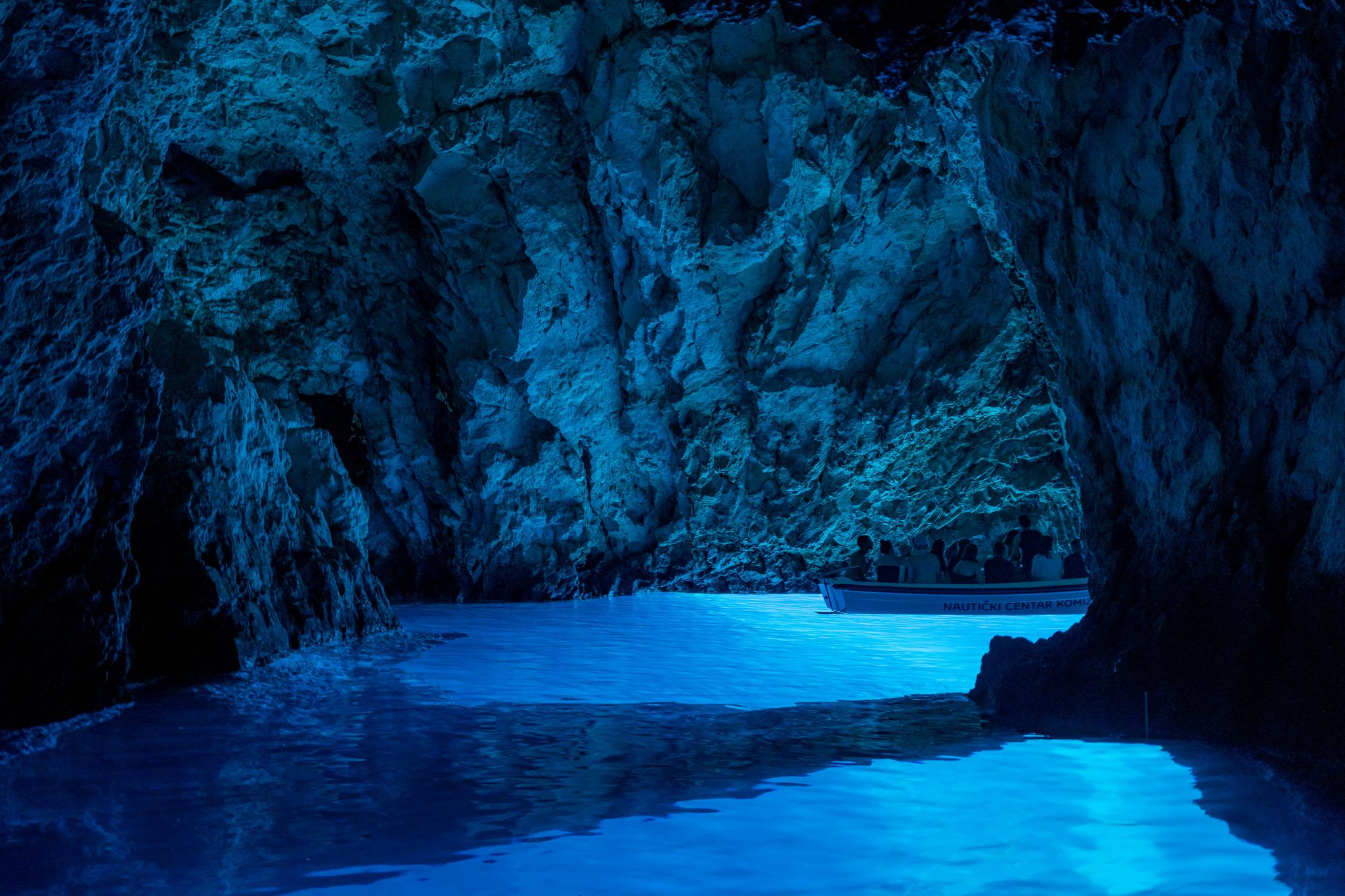
Summer is the best time to visit the Dalmatian Coast. You can swim in turquoise waters, admire the breathtaking Dinaric Alps, and enjoy relaxing beach vacations. Here are activities to do to fully embrace the magic of the Dalmatian Coast in summer:
Explore the islands of the Dalmatian Riviera
Summer (June to August) is the best time to visit the Dalmatian Islands. Go on a guided tour to the Blue Cave on Bisevo Island, enjoy fresh seafood in the village of Komiza on Vis, or cruise to the Blue Lagoon from Split.
Enjoy the Nightlife
Join the open-air parties at beach bars in Hvar or dance the night away in clubs tucked within the ancient city walls of Dubrovnik. Meanwhile, Split’s Riva promenade is the place for bustling nightlife, with its bars and clubs filled with music, drinks, and seaside views.
Explore the Hidden Gems of the Dalmatian Coast
Summer is the best time to visit the Dalmatian Coast to explore its hidden gems. Escape the crowds and visit Ston’s ancient salt pans, stroll the medieval streets of Trogir, or discover Makarska Riviera’s stunning caves. For a peaceful escape, wander through Solta’s charming villages, secluded beaches, and olive groves.
Chase the Sunset
In summer, cities like Zadar and Dubrovnik are at their most breathtaking during the long, golden sunsets. Enjoy the famous sunsets and the unique Sea Organ on the waterfront, or take in the stunning views from the city walls or a sunset kayaking adventure in Dubrovnik.
Hit the Beach
Take a refreshing dip in Dalmatia’s popular beaches, like the Golden Horn or Banje Beach. Consider beach vacations in Makarska if you prefer a more peaceful beach experience. Its quiet beaches, like Punta Rata in Brela, offer a laid-back experience away from the crowds.
Going on a Dalmatian Coast and Islands Cruise
Summer is the best time to visit the Dalmatian Islands for sailing adventures. From Dubrovnik, join a full-day Elaphite Islands cruise to escape the crowds. Or, if you’re starting from Trogir or Split, venture out to the stunning islands of Hvar, Brac, and the secluded Pakleni Islands.
Festival and Events on the Dalmatian Coast During Summer
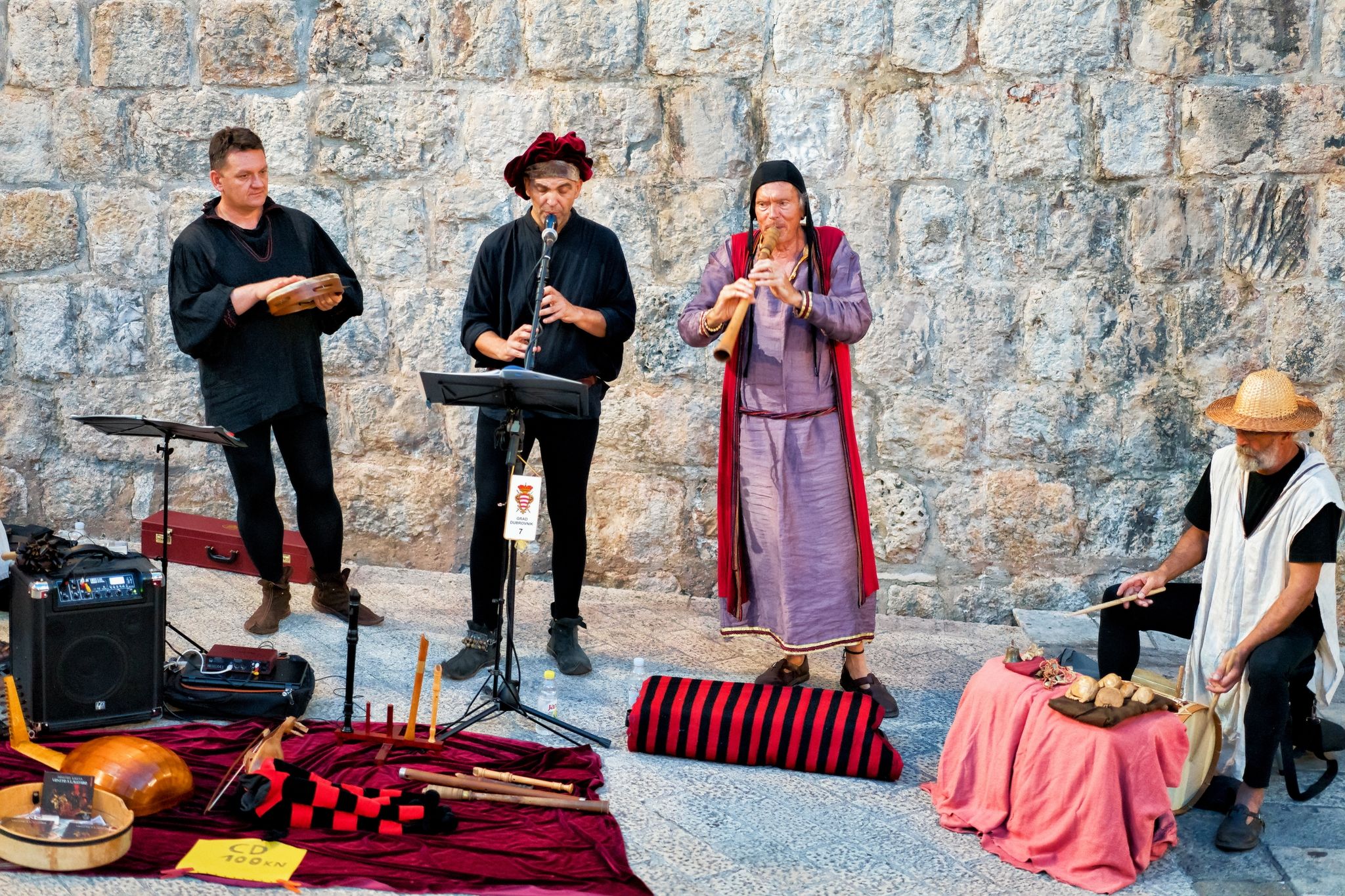
Dalmatian Coast is a festival hotspot with a summer calendar packed full of music, dance, and cultural experiences. Here’s a glimpse into some of the most popular summer festivals and events you won’t want to miss:
Dubrovnik Summer Festival (Dubrovnik, July to August): Watch music concerts, opera performances, theater productions, and art exhibitions in an open-air venue surrounded by Dubrovnik’s ancient city walls.
Moreska Festival (Korcula, July and August): If you’ve never seen a historical sword dance, summer in Dalmatia is your chance. Witness a captivating historical sword dance performance that dates back centuries.
Sonus Festival (Pag, August): Immerse yourself in the world of electronic music, where renowned DJs and international artists take center stage, transforming the island of Pag into a dance music paradise.
Split Summer Festival (Split, July and August): Set against the gorgeous backdrop of Marjan Hill, the Split Summer Festival is a cultural buffet of music, theater, and dance.
Hvar Summer Festival (Hvar, June to September): Experience a variety of musical genres, from classical concerts in historic venues to open-air performances.
Omis Pirate Festival (Omis, July and August): Witness thrilling battle re-enactments, explore replica pirate ships, and immerse yourself in the town's rich history of buccaneers through traditional music and lively celebrations.
Trogir Summer Festival (Trogir, July and August): The Trogir Summer Festival presents diverse music, theater, and dance performances. Step back in time with traditional jousting tournaments, demonstrations of medieval crafts, and lively music.
Travel Tips When Visiting the Dalmatian Coast in Summer

Thanks to its beautiful weather and lively atmosphere, summer is the best season to visit the Dalmatian Coast. Consider these essential travel tips when visiting Dalmatia in summer:
1. Pack Smart
Light Clothing: Bring lightweight, breathable clothing to stay cool in the summer heat.
Swimwear: Pack plenty of swimwear for beach days and water activities.
Sun Protection: Include sunscreen, sunglasses, and a wide-brimmed hat to protect yourself from the sun.
Comfortable Footwear: Comfortable sandals or walking shoes are essential for exploring towns and beaches.
2. Book Accommodations Early
High Demand: Summer is peak season, so book your accommodations well in advance to secure the best options.
Preferred Locations: Consider staying in or near popular destinations like Dubrovnik, Split, or Hvar for easy access to attractions and activities.
3. Beat the Crowds
Early Visits: Visit popular attractions like the city walls and Rector's Palace early in the morning or late in the afternoon to avoid peak crowds.
Less Popular Spots: Explore lesser-known islands like Vis and Solta and towns to enjoy a quieter, more relaxed experience.
What To Expect on an Autumn Dalmatian Coast Holiday

Autumn on the Dalmatian Coast is your last chance to dip in Croatia’s crystal-clear waters before winter sets in. Enjoy the peace and quiet of the off-season, where the sound of the waves replaces the summer noise. For pleasant weather and fewer crowds, the best time to visit the Dalmatian Coast is autumn.
In autumn, temperatures range from about 70 F to 80 F (20 C to 30 C). Besides hitting the beach and island hopping, the season is ideal for self-guided road trips in Dalmatia. Hop between medieval towns and visit nature trails without the summer's scorching sun.
With the summer rush over, popular destinations like Dubrovnik, Split, and Hvar are less crowded. It's the best season to visit the Dalmatian Coast for immersive cultural tours in Dubrovnik or engaging full-day tours in Split with more elbow room.
Plus, accommodation prices start to dip in autumn compared to the peak summer season. You’ll find sweet deals on hotels, apartments, and villas, meaning you can enjoy a little luxury without breaking the bank.
The Best Way To Enjoy a Dalmatian Coast Holiday in Autumn
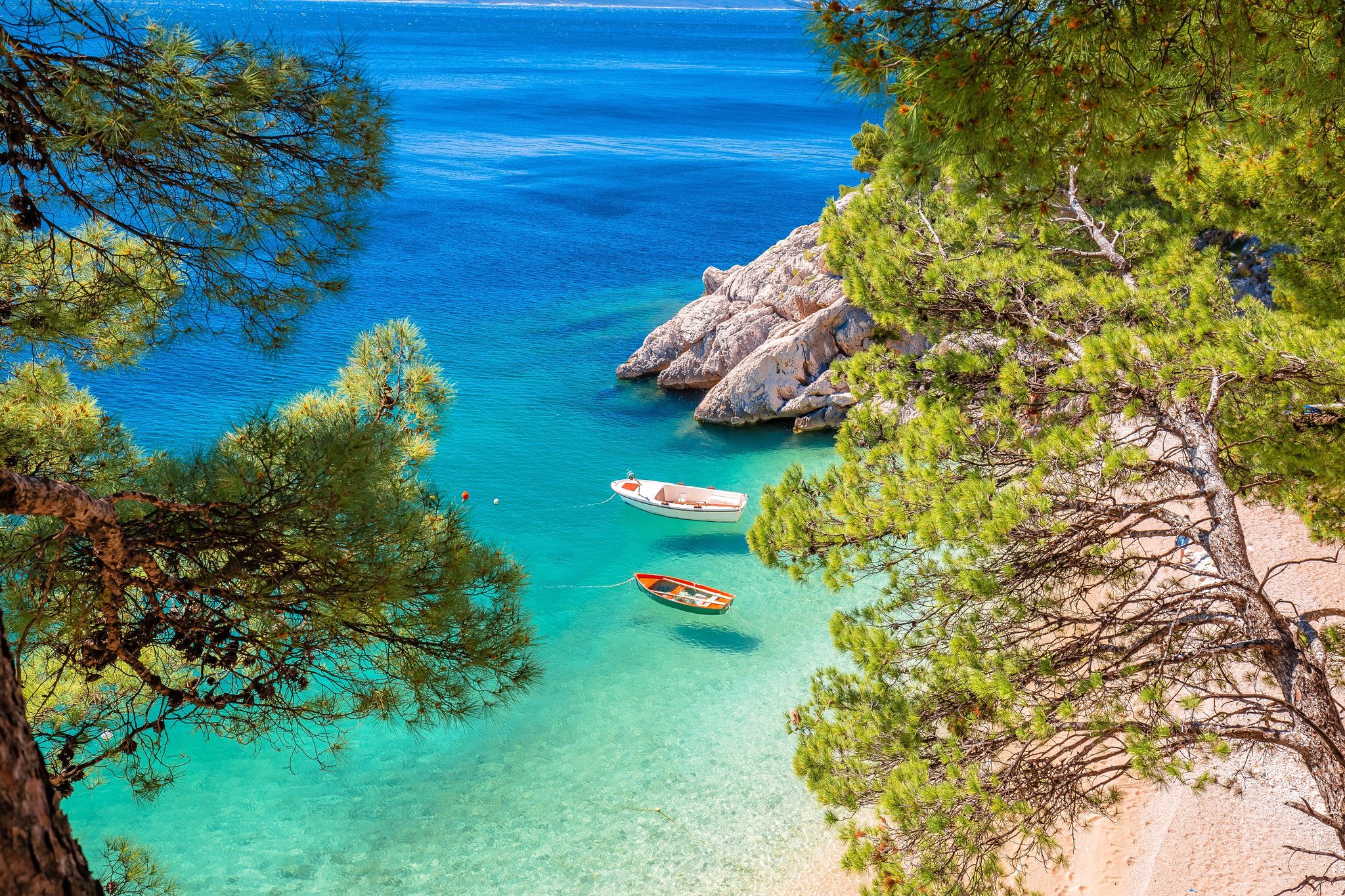
Autumn is the best time to visit the Dalmatian Coast for a peaceful and laid-back atmosphere. The crowds have thinned out, the weather is still pleasant, and the landscape is bathed in rich, warm colors. Here’s how to make the most of your autumn holiday in Dalmatia:
Take a Road Trip from Coastal Cities
There’s something magical about hitting the open road in autumn, especially along the stunning Dalmatian Riviera. Drive along the coast of Dalmatian Riviera on a 10-day self-drive road trip from Dubrovnik and travel through the coastal cities of Makarska, Split, and Zadar.
Embark on Wine-Tasting Tour
Head to the Peljesac Peninsula to sip on some bold reds, or hop over to Hvar Island to find exceptional wines unique to this area. Enjoy award-winning wines paired with local cheeses and meat platters, all in autumn's quiet and beautiful setting.
Relax on Quiet Beaches
For crowd-free swim, the best time to visit the Dalmatian Coast is from September to October. Enjoy a peaceful swim in the still-warm sea or relax on the sand at places like Golden Horn Beach on Brac, Stiniva Beach on Vis, and Sunj Beach on Lopud.
Visit the National Parks
Autumn is the best season to visit Dalmatia’s national parks. Take in the beauty of Krka National Park or dive into outdoor activities in Plitvice Lakes National Park. You can also hike through the lush forests of Mljet National Park or explore the dramatic coastal views of Biokovo Nature Park.
Enjoy the Peaceful Atmosphere
Stroll through Dubrovnik's Old Town, enjoy coffee at seaside cafes in Split, and immerse yourself in the local culture. The peaceful atmosphere in autumn makes it the best time to visit the Dalmatia.
Festival and Events on the Dalmatian Coast in Autumn
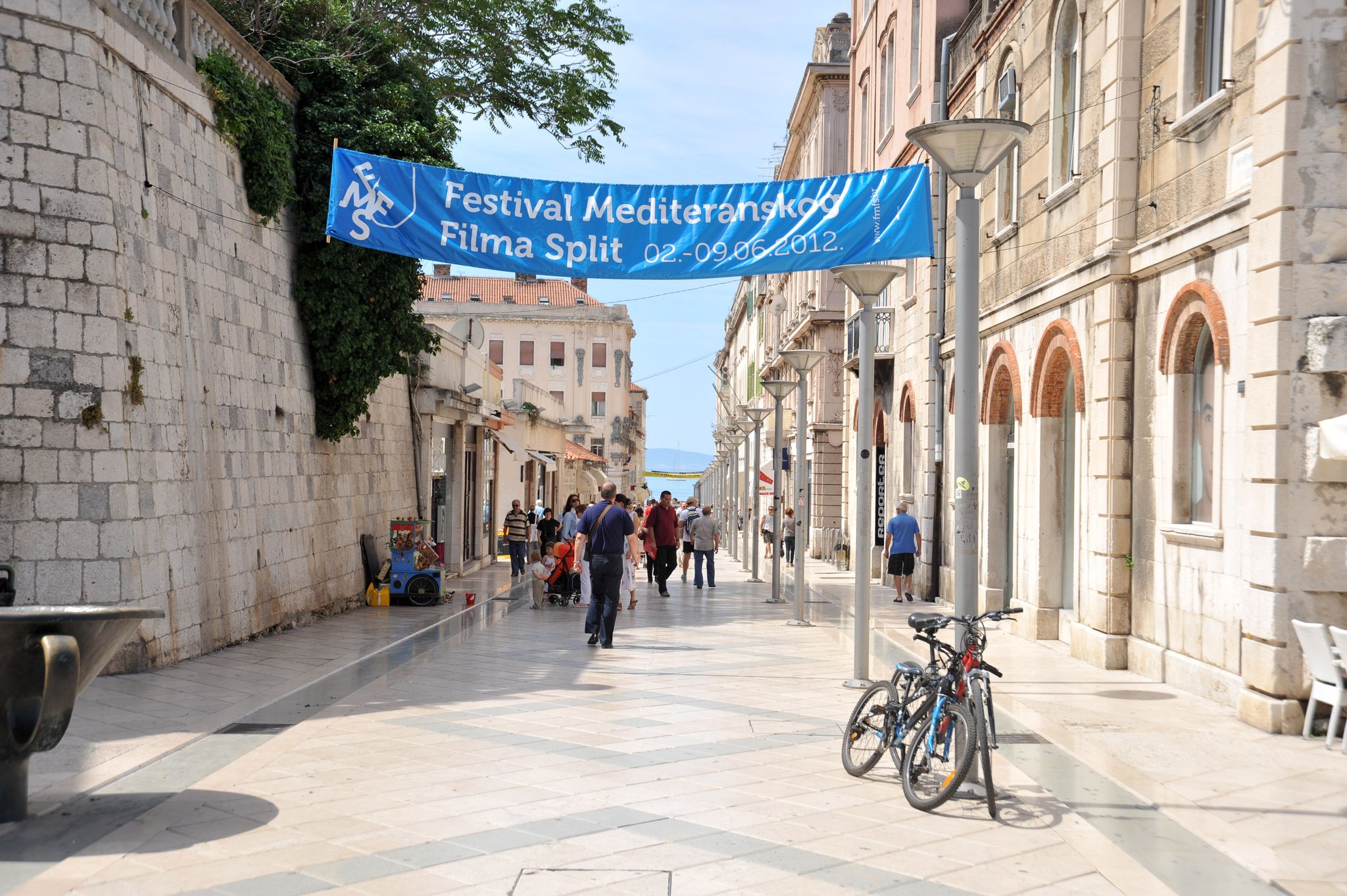
While the Dalmatian Coast might not have a jam-packed festival calendar, the charm lies in the unique experiences it offers. From harvest celebrations to local food festivals, autumn provides a window into the heart and soul of the region. Here are some events that will make your visit extra special:
Goulash Disko Festival (Komiza, September): Looking for something a little off the beaten path? The Goulash Disko Festival in Komiza is a unique festival that blends music, arts, and community spirit. It offers an intimate and eclectic atmosphere with performances by independent artists.
Autumn Music Variety (Dubrovnik, September): Dubrovnik turns up the cultural charm in autumn with its Autumn Music Variety series. Soak up a mix of classical, jazz, and contemporary performances in stunning venues around the city.
Dubrovnik Good Food Festival: Celebrate the culinary delights of Dubrovnik with cooking classes, wine tastings, and special themed dinners. The festival also includes workshops, food markets, and live entertainment.
Split Film Festival (Split, October): An international festival that showcases innovative and experimental films. Enjoy screenings, workshops, and discussions with filmmakers from around the world.
Trogir Musical Evenings (Trogir, November): End your autumn adventure on a high note with the Trogir Musical Evenings. Enjoy a series of classical music concerts by talented musicians in beautiful venues around Trogir.
Travel Tips When Visiting the Dalmatian Coast in Autumn

Autumn (September to November) is the best time to visit the Dalmatian Coast with mild weather and fewer crowds. To make the most of your autumn trip, consider these essential travel tips:
1. Pack Smart
Layered Clothing: Autumn weather can vary, so pack layers to stay comfortable. Include lightweight shirts for warmer days and jackets or sweaters for cooler evenings.
Comfortable Footwear: Ensure you have comfortable shoes for walking and exploring urban areas and natural landscapes.
Rain Gear: Bring a light rain jacket or umbrella, as autumn can occasionally bring showers.
2. Book Accommodations Early
Spring Deals: Many hotels and guesthouses offer lower rates in spring compared to the summer peak. Book early to secure the best deals.
Central Locations: Stay in central locations within cities like Dubrovnik, Split, or Zadar for easy access to main attractions and amenities.
Is the Dalmatian Coast Worth Visiting in Winter?

While the Dalmatian Coast shines during summer, winter is the best time to visit the Dalmatian Coast for those who want to avoid the crowds. Thanks to its Mediterranean climate, winter in Dalmatia is mild compared to central Croatia.
During this season, you can still explore the region’s ancient cities that seem even more enchanting under the soft winter light. Winter temperatures in Dalmatia rarely go below freezing, and the region still gets plenty of sunshine.
Compared to the rest of Croatia, Dalmatia’s winter weather is practically balmy. Dubrovnik, Split, and Zadar are all worth a visit, each offering its unique winter charm. And don’t forget the late-season attractions in Hvar, like the three-day Europa Laser Cup.
Winter offers a peaceful atmosphere and lower prices, making it the cheapest time to visit the Dalmatian Coast. With fewer travelers, you'll have more enjoyable experiences at attractions like the Church of St. Donatus, Fort Lovrijenac, and Klis Fortress.
So, if you’re ready for a different kind of Croatian adventure, pack your bags and get ready to fall in love with the charm of Dalmatian in winter.
The Best Way To Enjoy a Dalmatian Coast Holiday in Winter
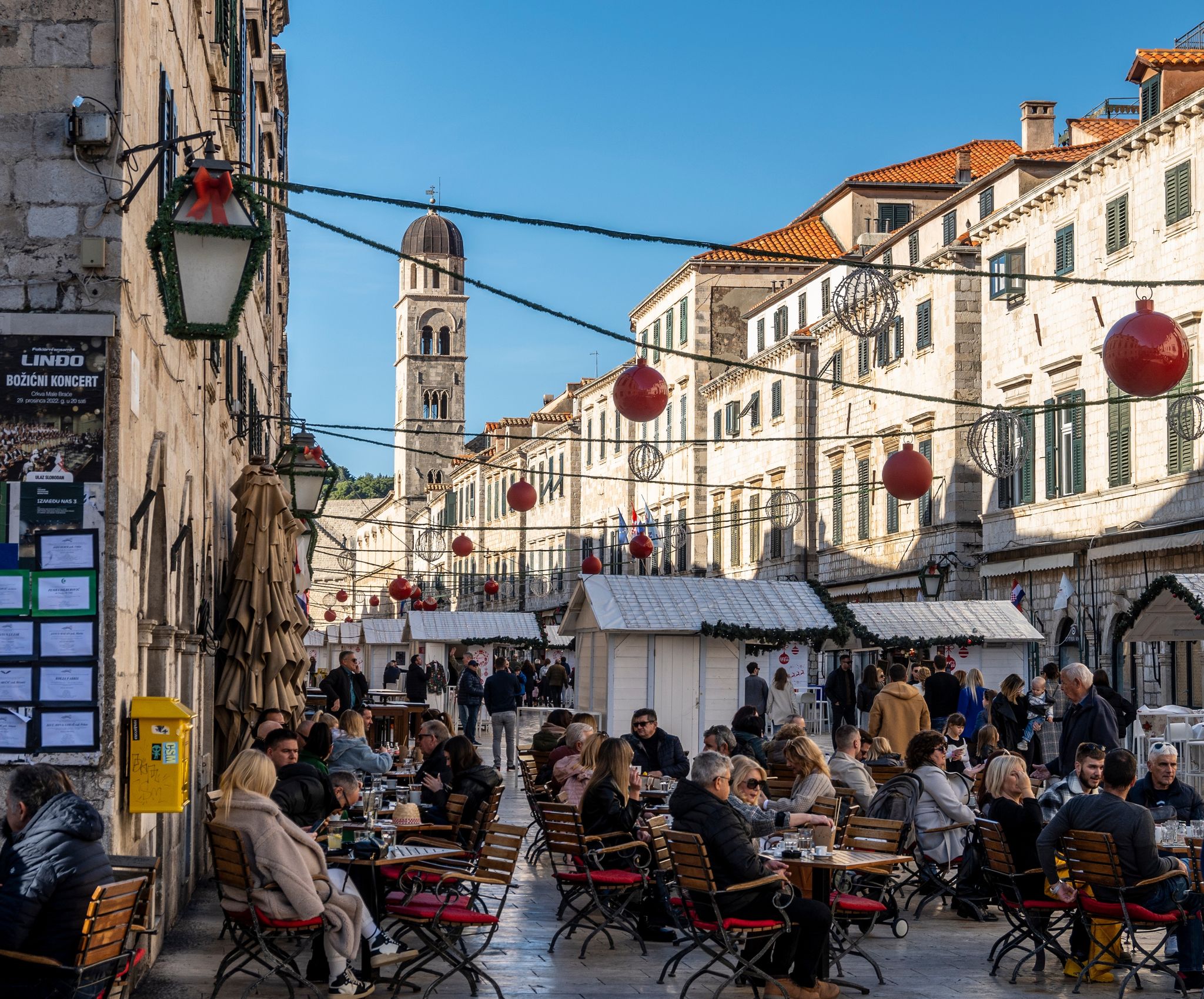
Winter on the Dalmatian Coast is the most unhurried season. It's a chance to experience Dalmatia’s authentic charm. Here’s how to make the most of your cozy, crowd-free getaway:
Relax and Rejuvenate in Traditional Spas
Winter is the best time to visit the Dalmatian Coast to indulge in thermal spas and wellness centers in cities like Split and Hvar. Soak in warm, bubbling pools and get pampered with wellness treatments for a soothing retreat.
Embrace the Peaceful Atmosphere
Without summer crowds, Dubrovnik and Split reveal their true charm. Explore Dubrovnik’s city walls and Split’s Diocletian Palace at a relaxed pace. Stroll through Trogir and Zadar’s historical centers, rich with ancient ruins and medieval streets.
Explore Museums and Galleries
When the weather gets a bit nippy, it’s the best time to visit the Dalmatian Coast to discover its history and culture. Explore Dubrovnik’s Maritime Museum or the Rector's Palace, where you can learn about the city’s history while staying toasty. In Split, the Archaeological Museum and the Gallery of Fine Arts offer a deep dive into the region’s ancient past and artistic flair.
Christmas Markets and Local Celebrations
Dalmatian Coast in winter comes alive with charming Christmas markets overflowing with handcrafted ornaments, local delicacies, and plenty of holiday cheer. Don’t miss the carol concerts echoing through historic squares or the nativity scenes displayed in churches.
Indulge in Local Cuisine
Savor steaming bowls of hearty stews and freshly baked bread in traditional taverns. Winter is the perfect time for authentic food-tasting adventures in Split, Dubrovnik, or Zadar. Treat yourself to classics like peka and pasticada.
Festival and Events on the Dalmatian Coast in Winter
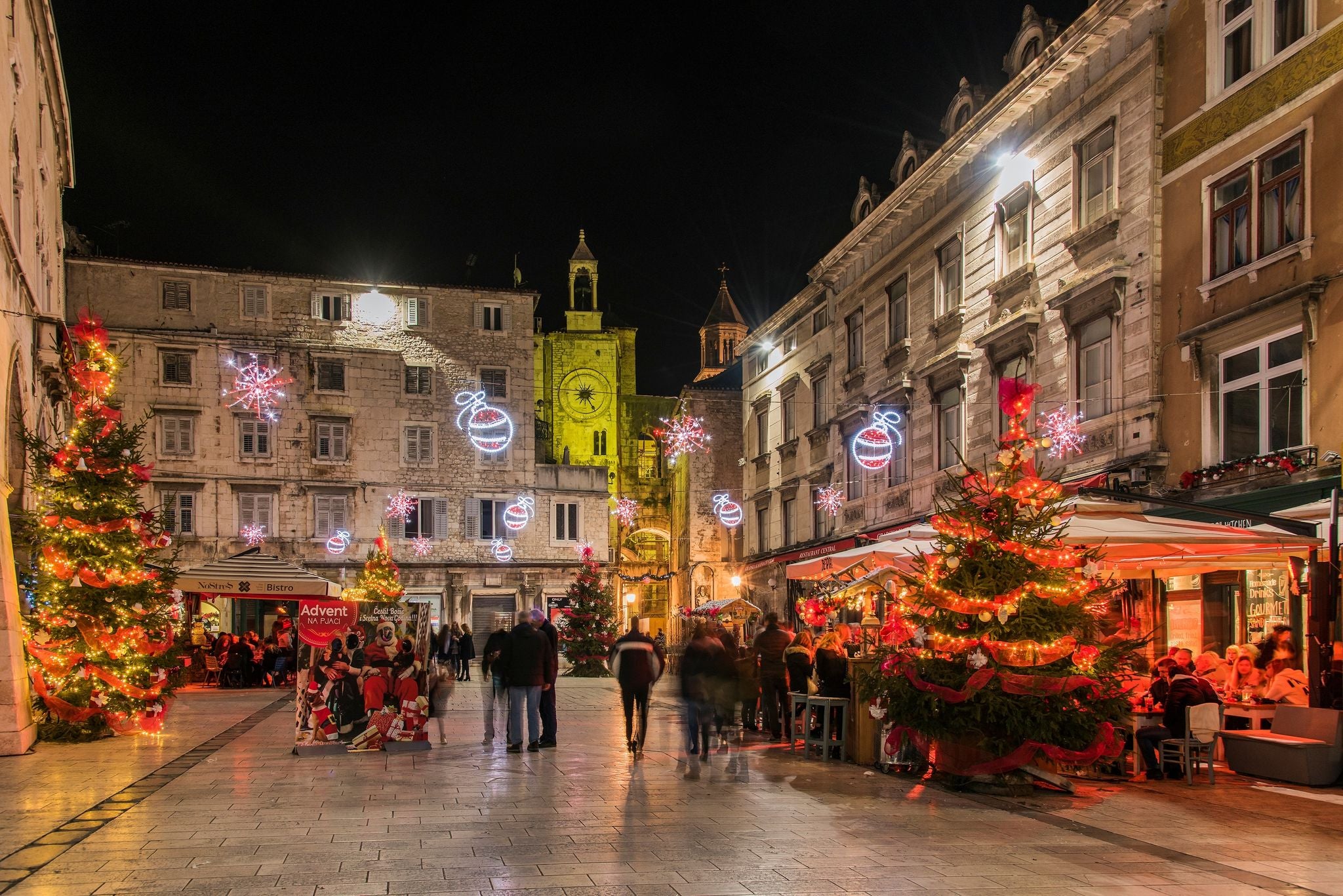
The festive spirit in winter takes center stage, with Christmas markets, local celebrations, and a chance to experience the region's cultural heart in a more intimate setting. Here are some notable ones:
- Dubrovnik Winter Festival (Dubrovnik, December to January): This festival works its magic, transforming the city into a winter wonderland with twinkling Christmas lights, festive decorations, and a charming Christmas market. You can enjoy concerts, theater performances, and culinary events, all while marveling at Dubrovnik’s historic architecture.
- Split and Zadar Advent: Split’s Riva promenade and main squares turn into a festive playground during Advent. Enjoy traditional Croatian dishes like sarma (cabbage rolls) and fritule (small fried doughnuts), and warm up with a cup of mulled wine. Zadar’s historic center hosts a vibrant Advent celebration with markets, concerts, and street performances. The event features local crafts, delicious seasonal foods, and a festive atmosphere perfect for holiday cheer.
- New Year’s Concert: Ring in the New Year with lively celebrations, fireworks, and concerts. Major cities along the coast light up with lively celebrations, fireworks, and concerts that turn public squares and promenades into giant dance floors.
- Feast of St Blaise (Dubrovnik, February): This centuries-old festival honors Dubrovnik’s patron saint, St. Blaise. The celebration includes a grand procession through the old town, traditional music, and religious ceremonies, providing a deep insight into the city’s heritage.
- Split Marathon (Split, February): This winter marathon takes runners through the historic and scenic parts of Split, offering various race categories to suit all levels.
Travel Tips When Visiting the Dalmatian Coast in Winter
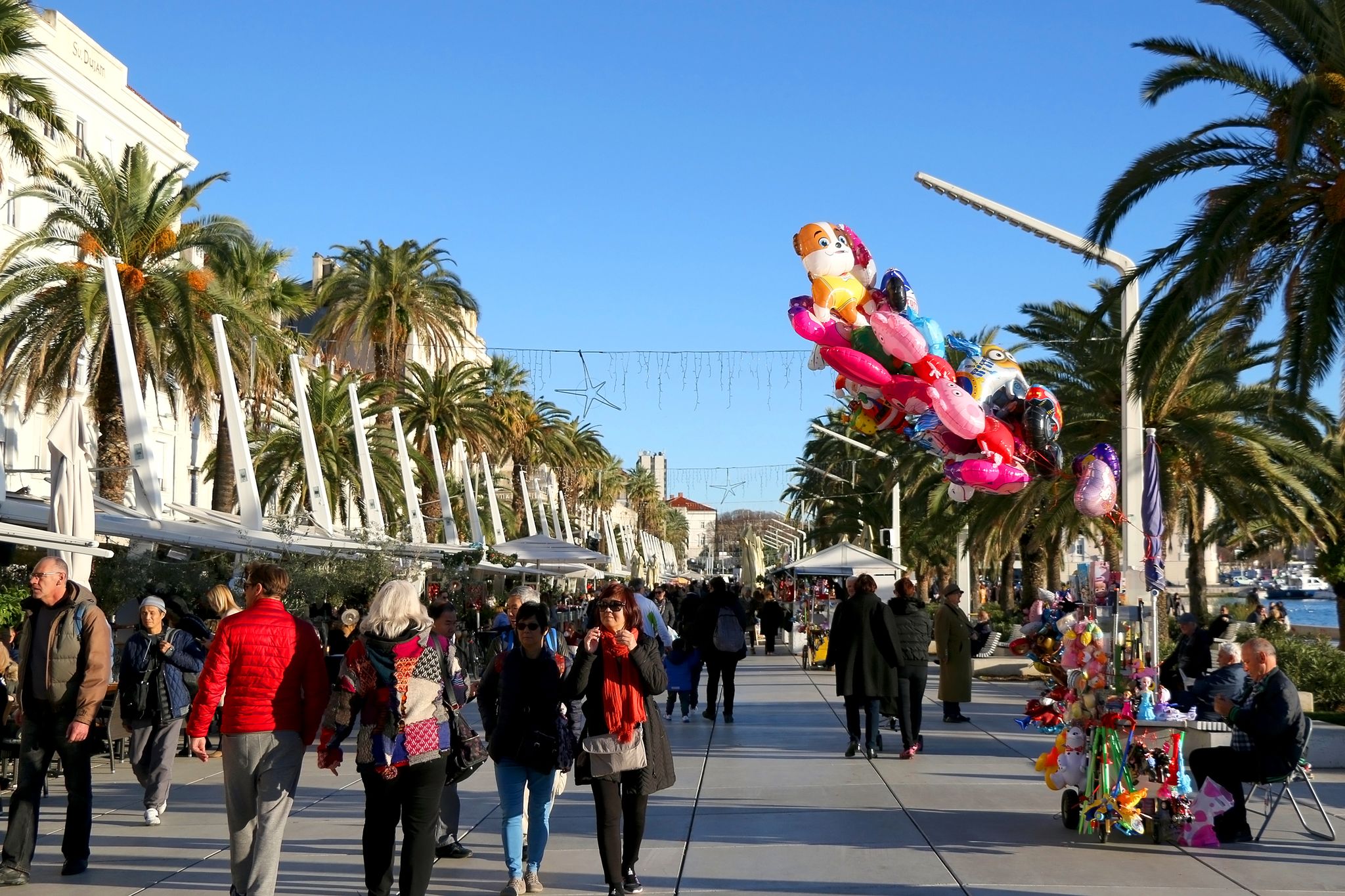
Winter on the Dalmatian Coast offers a unique and serene experience with fewer crowds, cooler temperatures, and a relaxed atmosphere. Here are some essential travel tips to help you make the most of your winter visit in Dalmatia:
1. Pack Accordingly
Warm Clothing: Bring layers, including sweaters, jackets, and scarves, to stay warm in the cooler weather.
Comfortable Footwear: Ensure you have sturdy, comfortable shoes for walking and exploring.
Rain Gear: Winter can bring rain, so pack a waterproof jacket or umbrella.
2. Book Accommodations in Advance
Off-Season Deals: Take advantage of lower rates and special offers available during the off-season. Many hotels and guesthouses offer discounts.
Location: Consider staying in central locations within cities like Dubrovnik, Split, or Zadar to be close to major attractions and amenities.
3. Enjoy the Peaceful Atmosphere
Less Crowded: Winter is the least crowded season, allowing you to explore popular sites without the hustle and bustle.
Relaxed Exploration: Take your time visiting historical sites, museums, and cultural landmarks without rushing.
Weather on the Dalmatian Coast
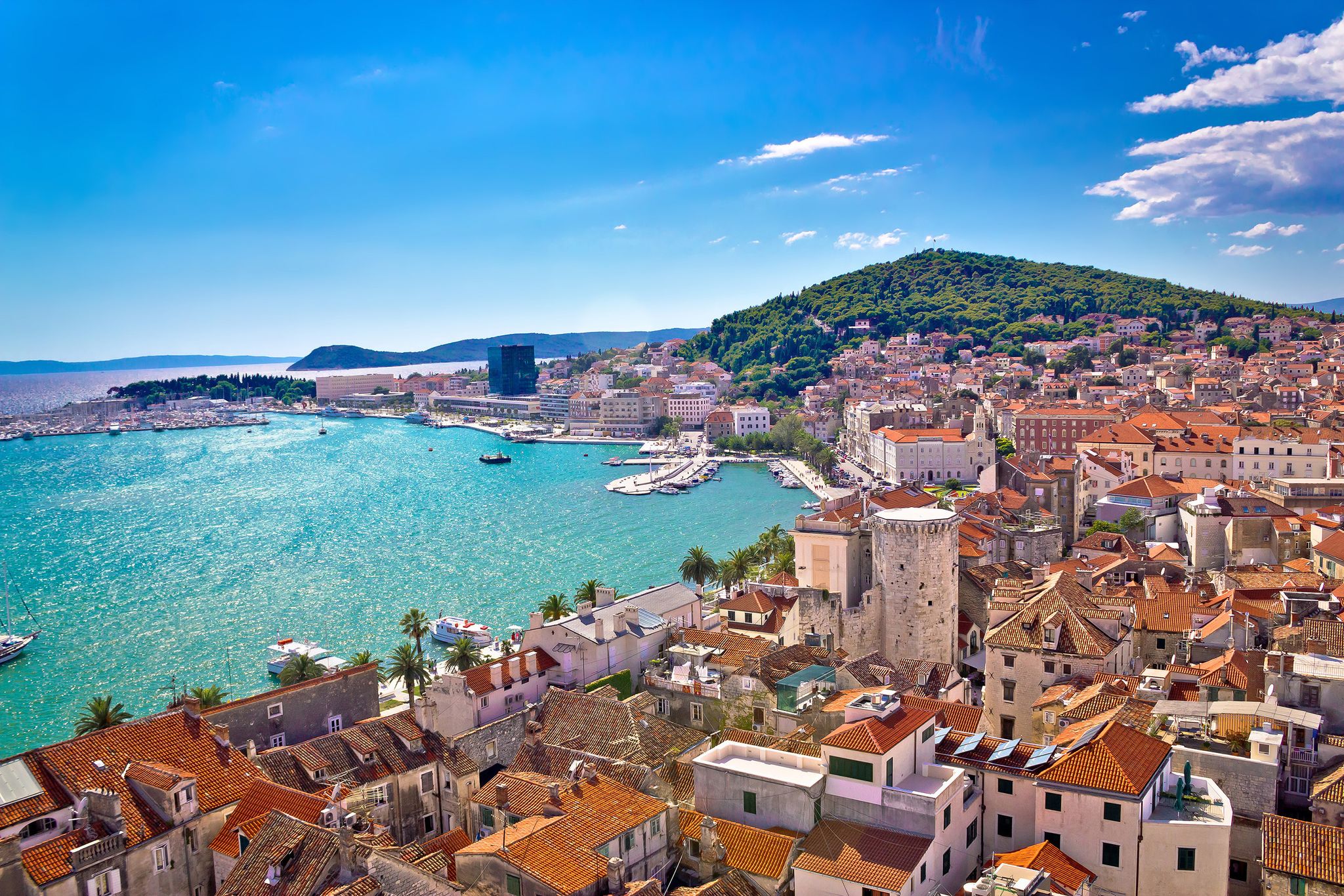
The Dalmatian Coast boasts a beautiful Mediterranean climate, with warm summers and mild winters. Southern Dalmatia is the warmest and driest, adding to its sun-kissed appeal, while Central Dalmatia offers a similarly pleasant climate. Here's a closer look at the weather in Dalmatia by month:
January in Dalmatian Coast
- Average Temperature: The coldest month with around 45 F to 54 F (7 C to 12 C).
- Weather: Cool and mild with occasional rain.
February in Dalmatian Coast
- Average Temperature: Temperatures start to rise slightly, ranging from 45 F to 55 F (7 C to 13 C).
- Weather: Similar to January, with cool and mild conditions.
March in Dalmatian Coast
- Average Temperature: Temperature during this month is around 48 F (9 C) to 59 F (15 C).
- Weather: Warming up, with more sunny days and less rain. Perfect for outdoor activities like hiking.
April in Dalmatian Coast
- Average Temperature: 54 F to 64 F (12 C to 18 C) with pleasant days and cool nights.
- Weather: Occasional rain showers are possible.
May in Dalmatian Coast
- Average Temperature: Warm days with temperature ranging from 61 F to 72 F (16 C to 22 C).
- Weather: Warm and sunny, with occasional showers.
June in Dalmatian Coast
- Average Temperature: Temperatures soar into about 68 F to 81 F (20 C to 27 C).
- Weather: Warm and sunny, with plenty of sunshine and minimal rain.
July in Dalmatian Coast
- Average Temperature: The hottest months with about 73 F (23 C) to 86 F (30 C).
- Weather: Hot and dry, with plenty of sunshine.
August in Dalmatian Coast
- Average Temperature: The hottest months with about 75 F (24 C) to 86 F (30 C).
- Weather: Hot and dry, with plenty of sunshine and long days.
September in Dalmatian Coast
- Average Temperature: Still warm, with an average of about 66 F to 79 F (19 C to 26 C).
- Weather: Warm and sunny, with cooler evenings.
October in Dalmatian Coast
- Average Temperature: October sees temperatures around 59 F (15 C) to 70 F (21 C).
- Weather: Mild and pleasant, with more rainfall. Ideal for cultural events and exploring historic sites.
November in Dalmatian Coast
- Average Temperature: Marks the start of the cooler season with temperatures ranging from 52 F to 61 F (11 C to 16 C).
- Weather: Cooler and wetter, with occasional sunny days. Great for a peaceful getaway and off-season deals.
December in Dalmatian Coast
- Average Temperature: Mildest month of winter, with an average temperature of about 46 F to 55 F (8 C to 13 C).
- Weather: Cool and mild. Rain is more frequent, with a chance of snow in the mountains.
Travel Seasons on the Dalmatian Coast
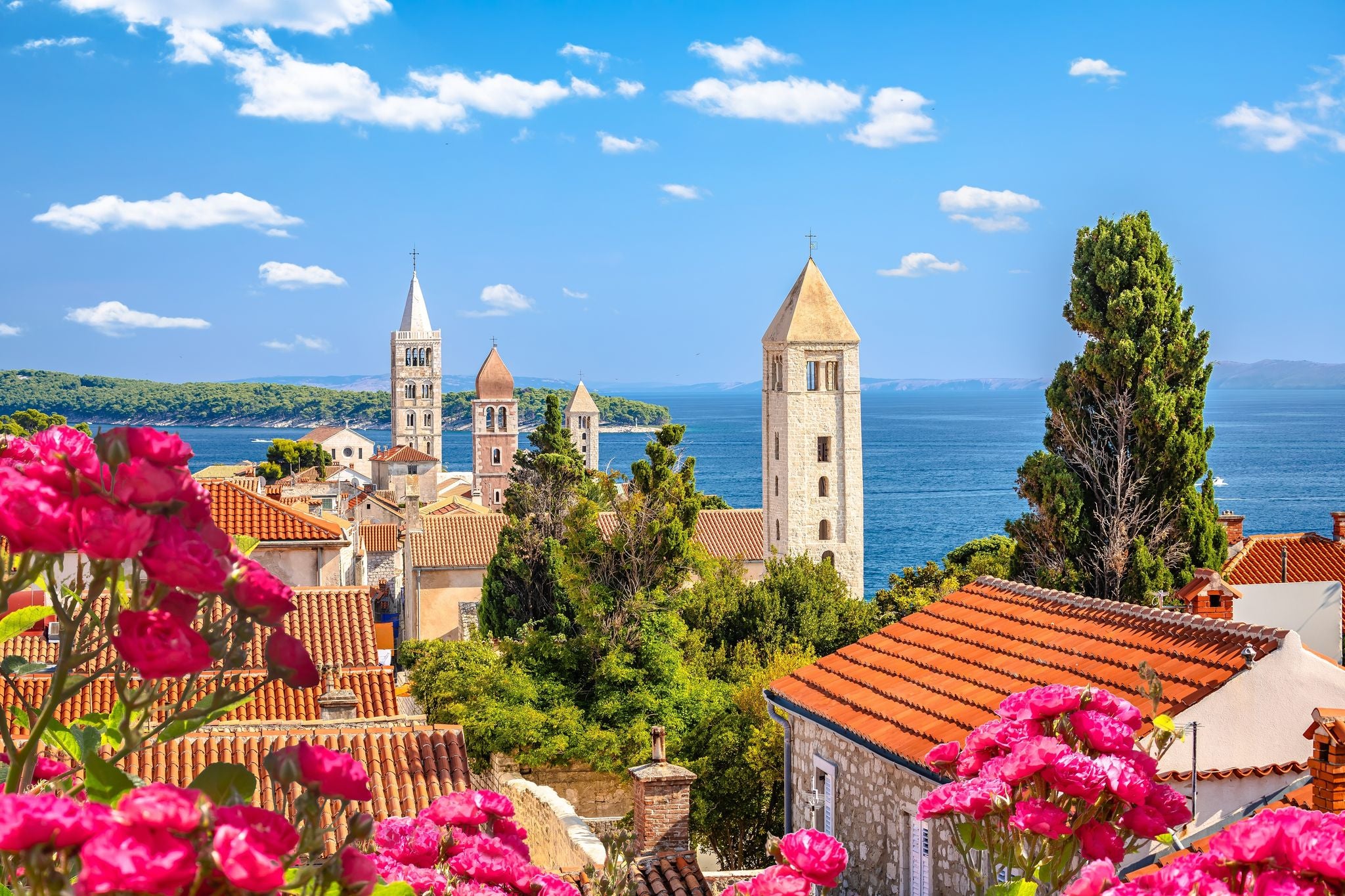
The Dalmatian Coast is a year-round stunner, with its scenic beaches, breathtaking islands, and medieval cities. During the peak season (June to August), cruise travelers flock to cities like Dubrovnik and Split, filling the streets with a lively buzz and a vibrant atmosphere.
However, the shoulder season (March to May and September to October) is the best time to visit the Dalmatian Coast for a more relaxed experience. Wander through Split and Dubrovnik with fewer crowds, and see shorter lines in restaurants in Zadar. Meanwhile, the low season (December to February) is the cheapest time to visit Dalmatia.
In this chapter, we’re diving into the pros and cons of each travel season on the Dalmatian Coast. Keep reading to find out when to visit based on your budget and crowd preferences.
Peak Season on the Dalmatia
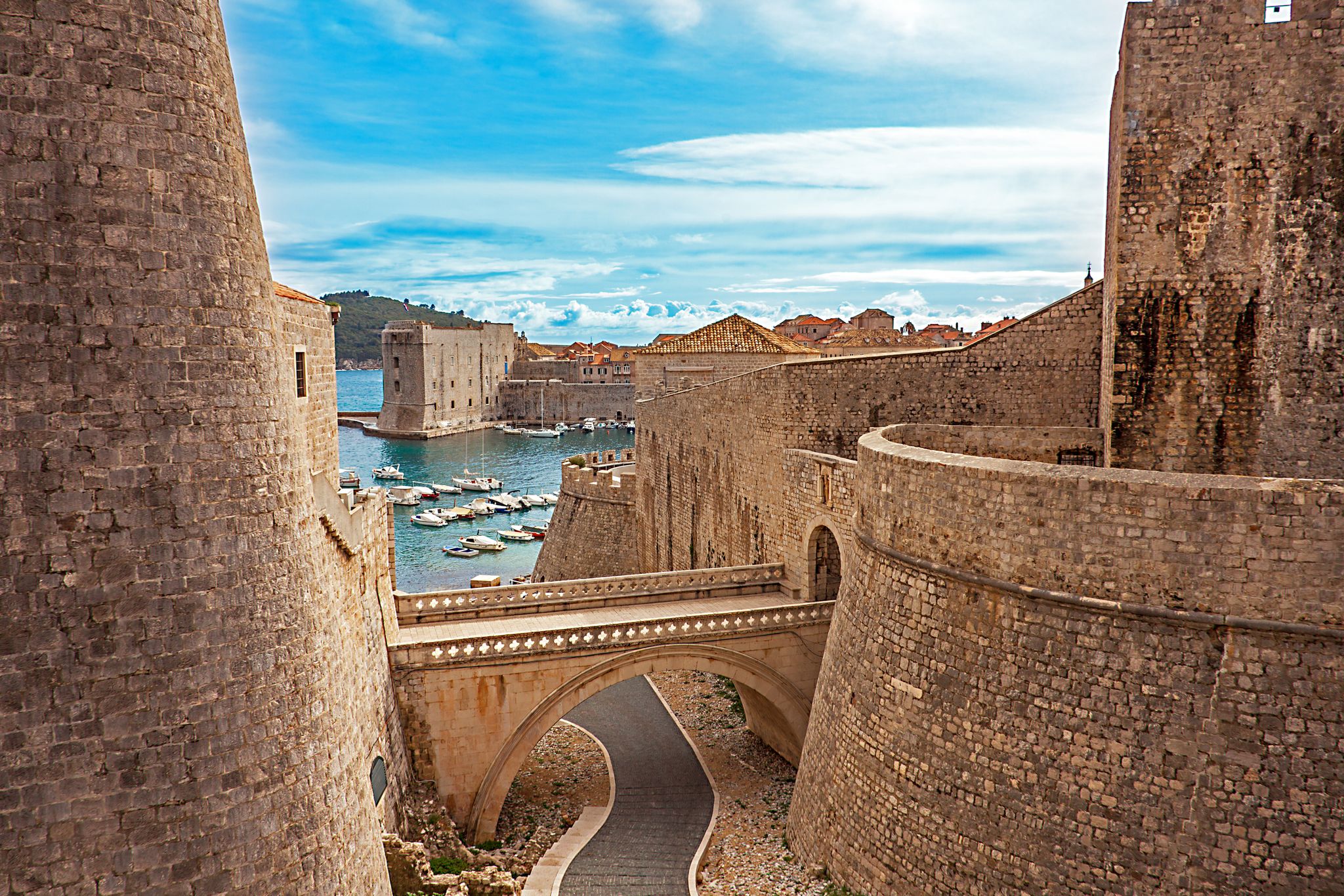
Peak season on the Dalmatian Coast falls from July to August. With hot and balmy temperatures, it’s the best time to visit the Dalmatian Coast to soak up the sun in Makarska and dive into the crystal-clear waters in Hvar.
During peak season, the streets of Dubrovnik, Zadar, and Split are buzzing with a lively mix of locals, crowds, and cruise travelers. Every corner is packed with excitement, from bustling outdoor cafes to popular attractions like Rector’s Palace and Saint Domnius Cathedral.
Sure, it’s the busiest time of the year, but that’s part of the charm. Lively events, sun-soaked days, and a high-energy atmosphere make the peak season the best time to visit the Dalmatian Coast.
Advantages of Visiting the Dalmatian Islands During Peak Season
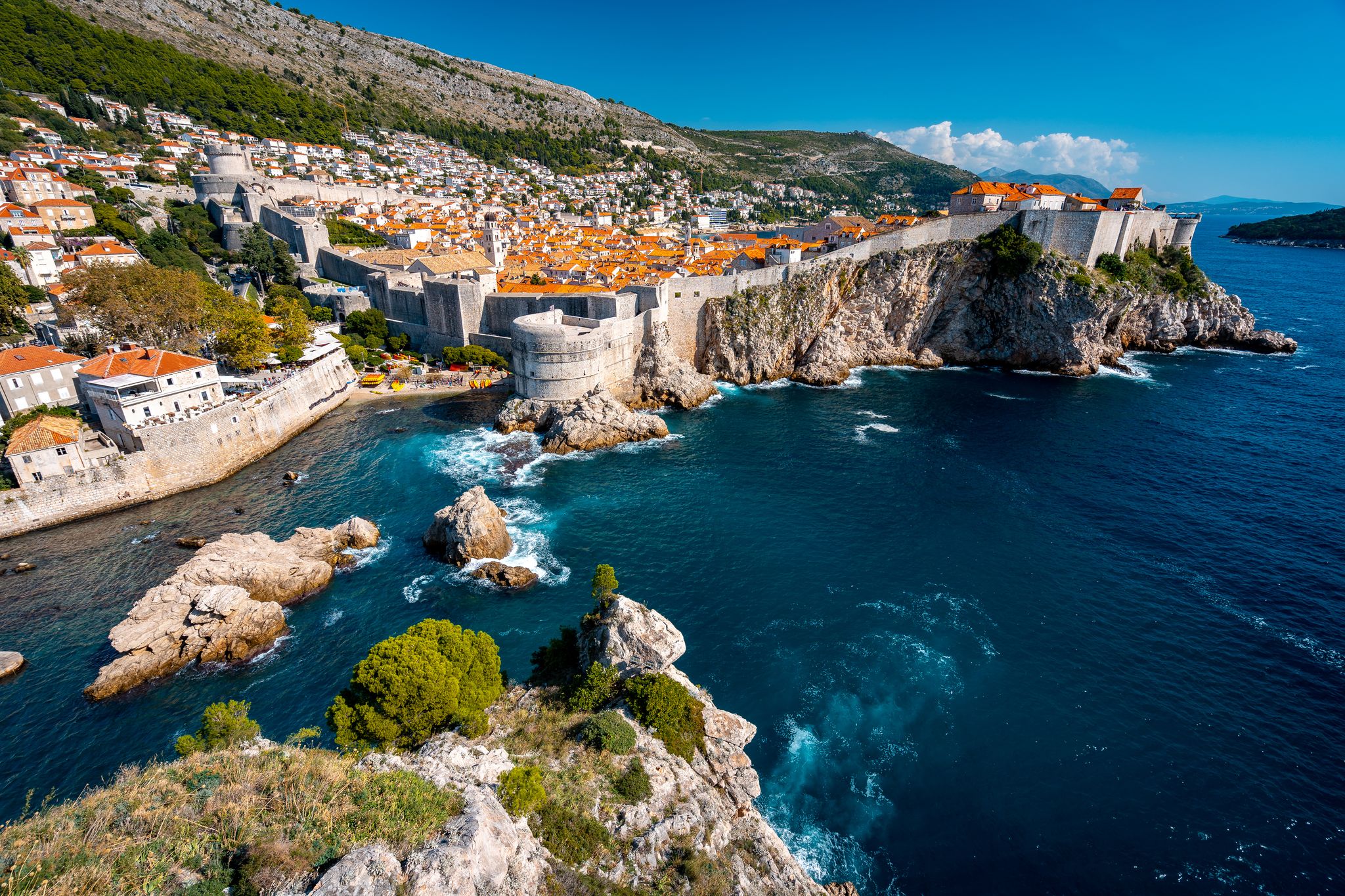
- Festive Vibe: Peak season is the best time to visit Dalmatia for those who love the action. Enjoy events like the Korcula Sword Dance Festival, Dubrovnik Summer Festival, and Sonus Festival, turning the coast into a celebration of culture and music.
- Vibrant Nightlife: The nightlife in peak season is unbeatable. From sipping cocktails at a trendy beach bar in Hvar, dancing the night away at a lively nightclub in Split, or enjoying an outdoor concert under the stars in Dubrovnik, there’s no shortage of entertainment.
- Perfect Beach Weather: For beach lovers, summer in Dalmatia is pure bliss. With long, sun-soaked days, it’s the best time to visit the Dalmatian Coast. During this time, beaches like Golden Horn Beach on Brac Island and Banje Beach in Dubrovnik are at their peak.
- Long daylight hours: July and August bring long days, perfect for exploring Dalmatia. Extra daylight gives you more time to explore historic towns or relax on the beach.
Disadvantages of Visiting the Dalmatian Islands During Peak Season
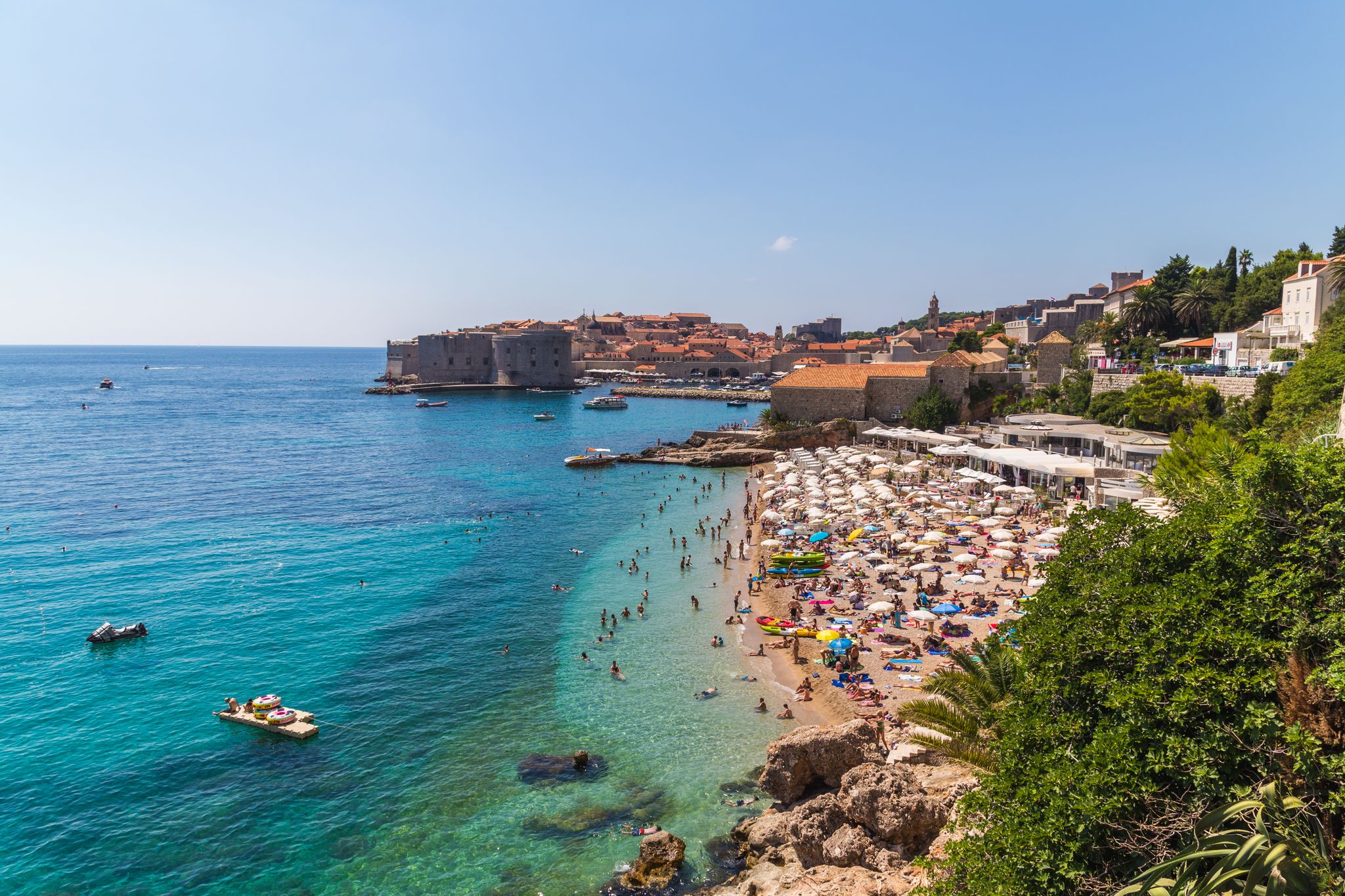
- Crowds: Popular spots like Dubrovnik and Split can get crowded, so finding a peaceful spot on the beach or exploring historical sites is a challenge.
- Higher prices: Summer on the Dalmatian Coast comes with higher prices for flights, accommodations, and dining. If you’re on a budget, this may not be the ideal time to splurge on a luxury villa with a sea view. Booking well in advance can help secure better rates, but expect to spend more during peak season.
- Hot weather: The heat can be intense during summer on the Dalmatian Coast. It’s best to plan your adventures early in the morning or evening when things cool down.
Shoulder Season in Dalmatia

The shoulder season, from April to June and September to October, is often considered the best time to visit the Dalmatian Coast. It’s perfect for those seeking a balanced, budget-friendly Croatian adventure with fewer crowds. The weather is warm enough for swimming in the Adriatic but cool enough for hiking and exploring towns like Sibenik and Trogir.
With fewer vacationers, you can enjoy walking through ancient streets and dining at outdoor cafes. It's the best time to visit Dalmatia for fascinating city tours in Dubrovnik, Split, or Zadar.
The shoulder season also lets you connect with the local culture in a way that’s hard to do in the peak season. You’ll have more chances to chat with locals and enjoy meals in uncrowded restaurants. The atmosphere is calm and peaceful, yet there’s still enough buzz to keep things lively and fun.
Advantages of Visiting the Dalmatian Islands During Shoulder Season

- Pleasant Weather: During the shoulder season, you’ll bask in warm, sunny weather ideal for walking around the Old Town Dubrovnik, exploring Plitvice Lakes National Park’s natural trails, and enjoying outdoor sports like river rafting in the Cetina River.
- Better Deals: In the shoulder season, you’ll find lower prices on flights, hotels, and tours, making it the best time to visit the Dalmatian Coast for budget travelers.
- More Space: With fewer crowds, you can visit the Elaphite Islands, explore Zadar’s attractions, or dine by the sea in Split without the hassle of long lines.
Disadvantages of Visiting the Dalmatian Islands During Shoulder Season
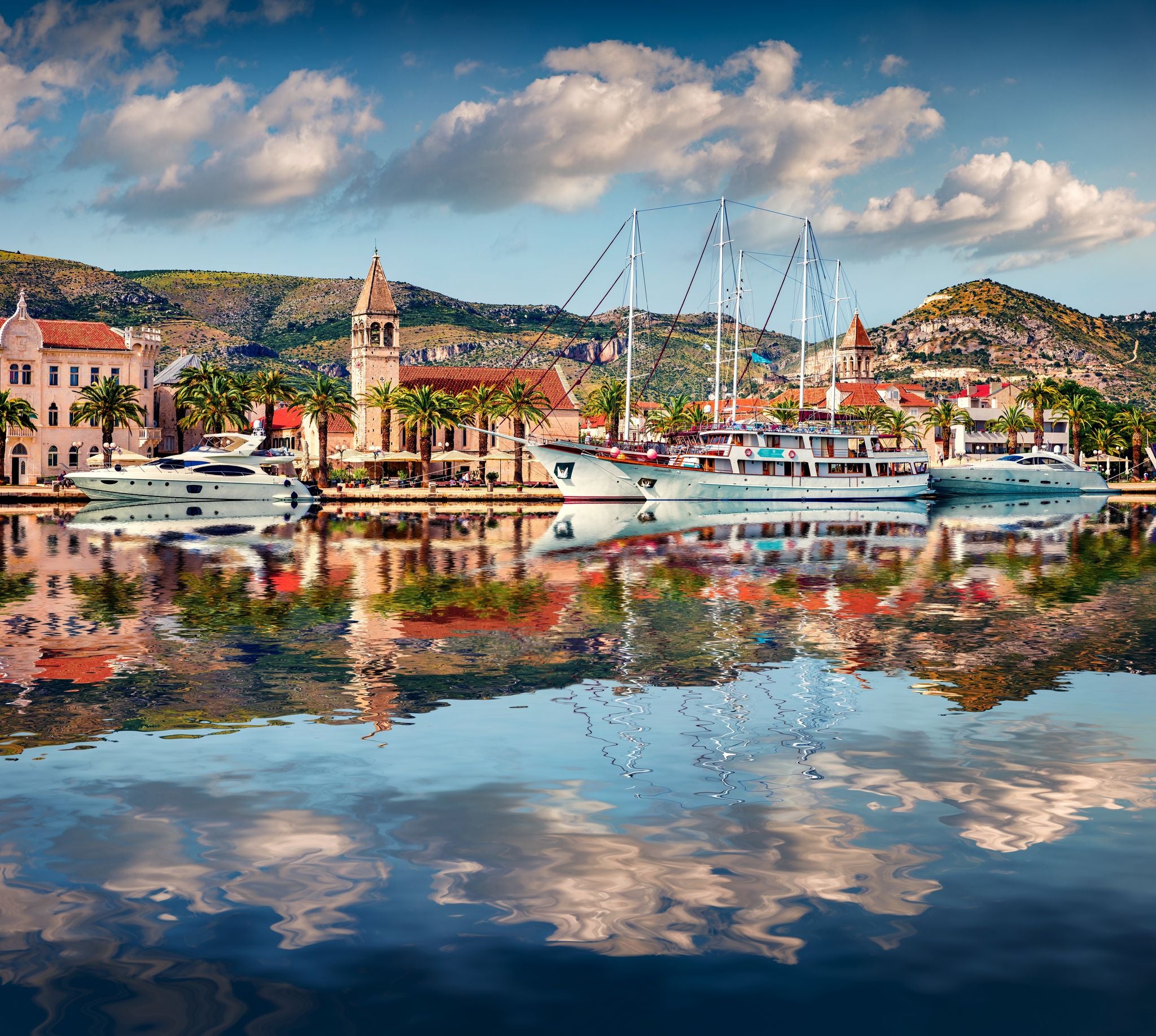
- Limited Events: Some larger festivals are scheduled during the peak season, so you might miss out on certain activities. However, local events like the Oyster Festival and Makarska Fishermen's Night make for a more genuine and enjoyable trip.
- Varied Weather: While generally pleasant, the weather can be unpredictable, especially in early spring or late autumn. Pack accordingly for cooler evenings and occasional rain.
Low Season in Dalmatia
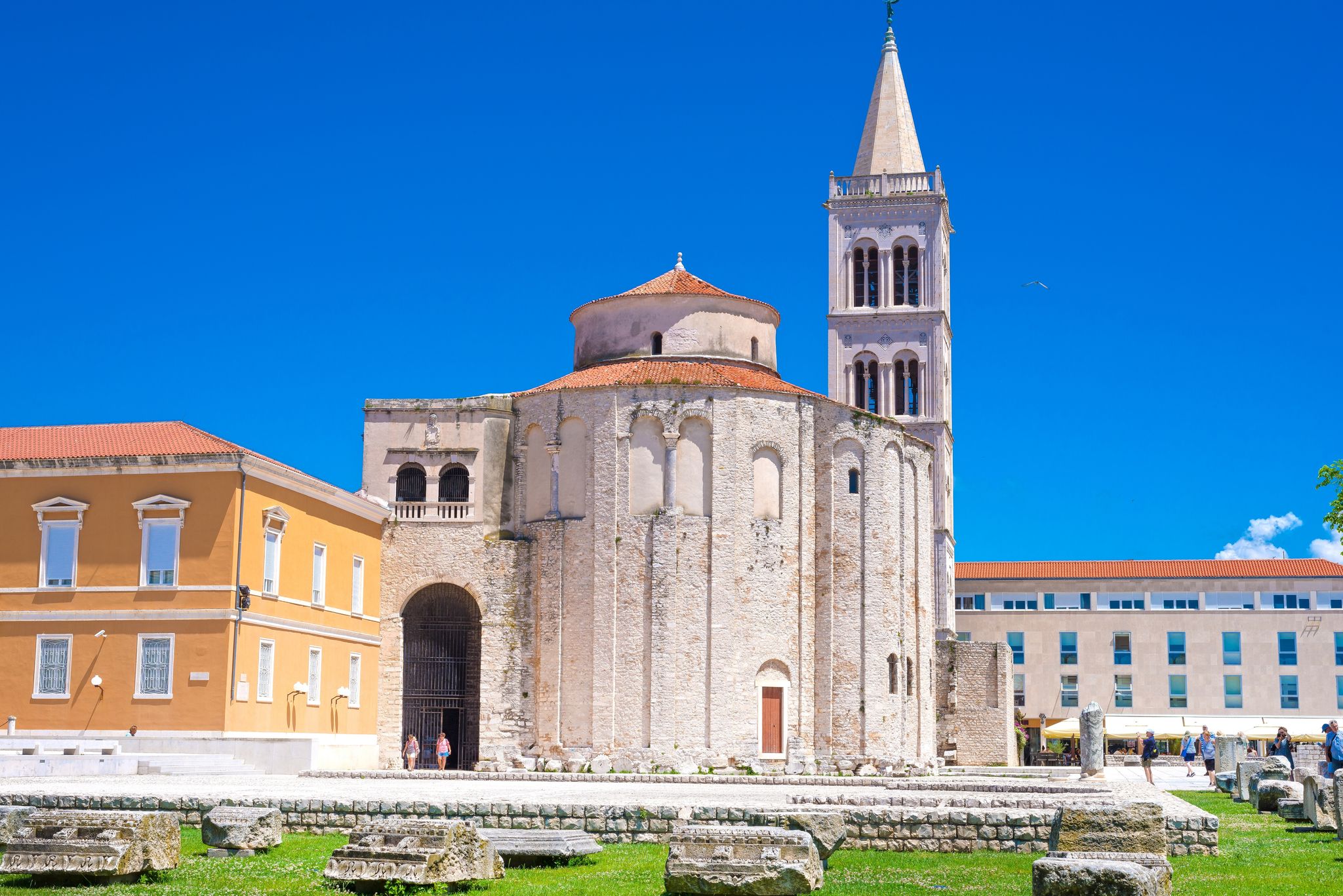
Travelers often overlook the low season, which spans from November to March. However, it’s the best time to visit the Dalmatian Coast for peaceful getaways and affordable exploration.
Popular destinations like Dubrovnik and Split are free from the crowds, and it is the cheapest time to visit the Dalmatian Coast. During this time, you can enjoy top experiences in Dubrovnik or Split like a local. Enjoy uncrowded attractions, dine in quiet cafes, and interact with the local community.
When traveling during the low season in Dalmatia, you can skip the smaller towns but stay in bigger cities. If you plan to stay in northern Dalmatia, book accommodations in Zadar, Split in Central Dalmatia, and Dubrovnik in Southern Dalmatia. These cities still have enough going on to keep you entertained, but with a relaxed vibe that’s perfect for unwinding.
The low season is the best time to visit the Dalmatian Coast if you want a more authentic, local experience and don’t mind trading some beach time for a quieter adventure. If you’re flexible with your plans, the low season in Dalmatia can be a delightful surprise.
Advantages of Visiting the Dalmatian Islands During the Low Season
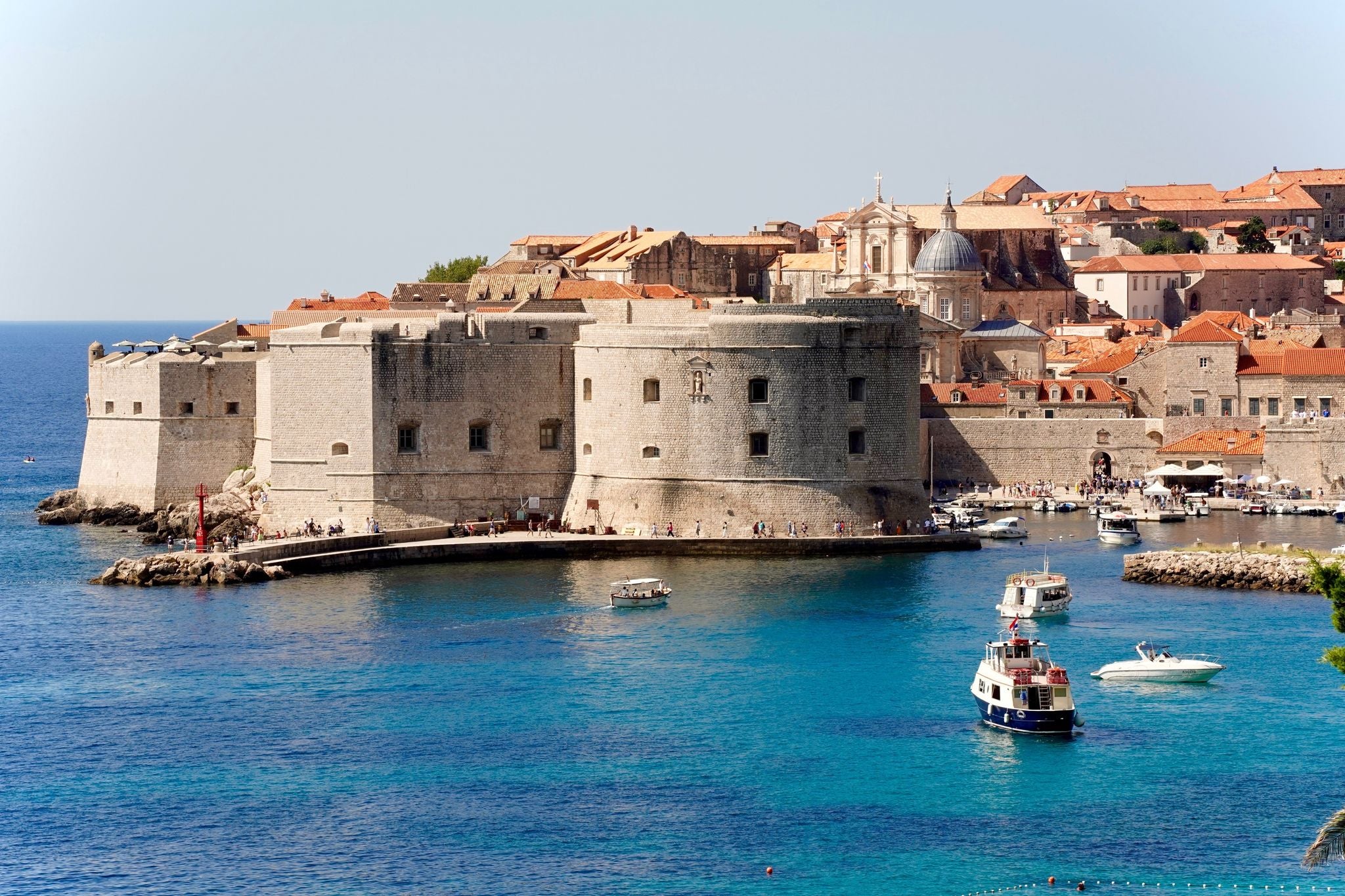
- Great Deals: With the year’s lowest prices on flights and hotels, the low season is the cheapest time to visit the Dalmatian Coast. You can splurge a little more on those extra adventures (or maybe just a few more scoops of gelato) while staying within your budget.
- Tranquility: During the low season, you can explore without the crowds. Whether you’re walking along the historic streets of Dubrovnik or Split, the absence of the usual crowds makes everything feel a little more magical.
- Unique Festivals: Winter on the Dalmatian Coast isn’t just about quiet streets and great deals. It’s also your chance to dive into the local culture with unique winter festivals like the Feast of St Blaise, charming Christmas markets, and lively New Year celebrations.
Disadvantages of Visiting the Dalmatian Islands During the Low Season
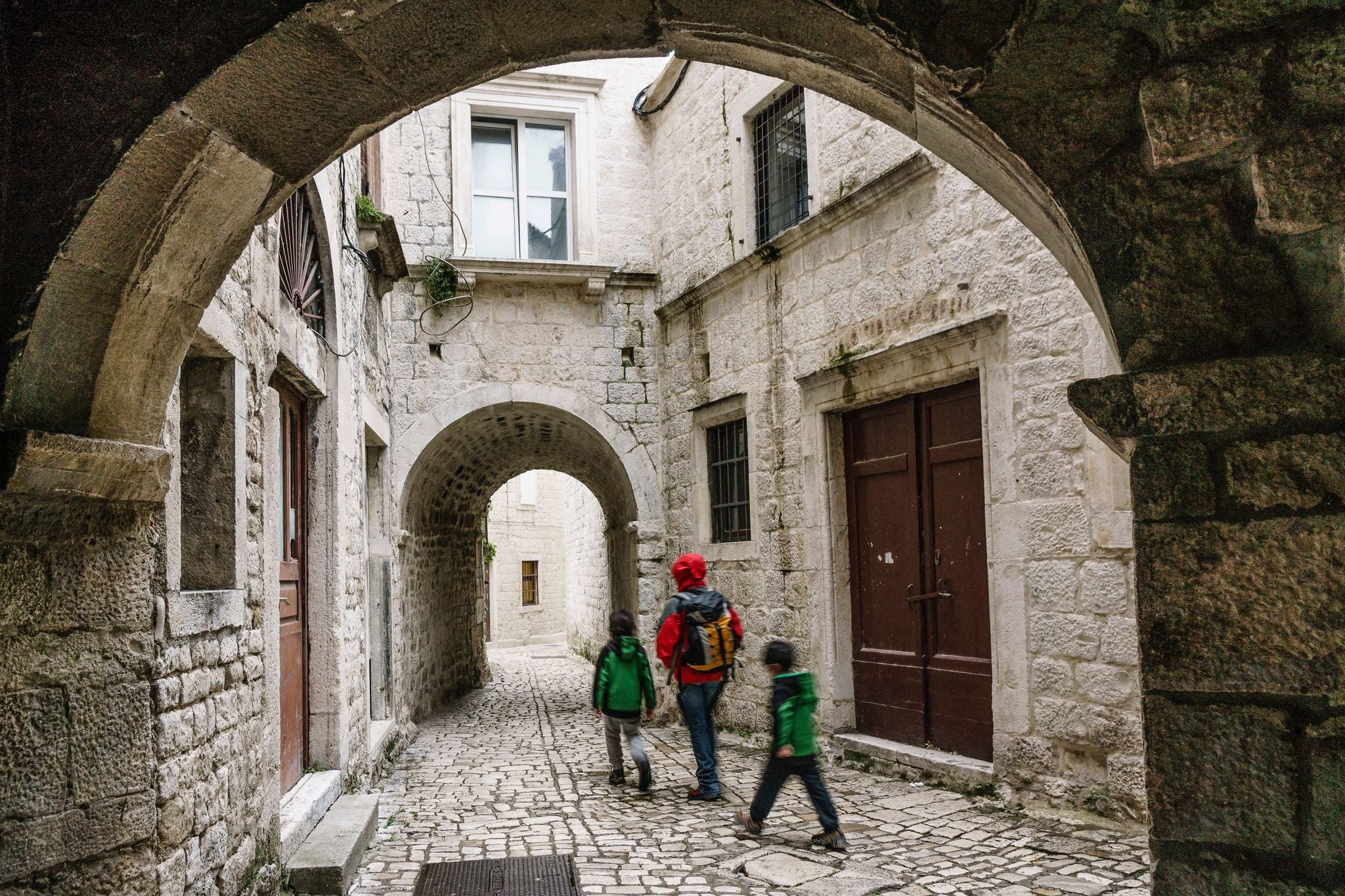
- Limited Services: Many hotels and restaurants may be closed or running on reduced hours, so it’s a good idea to plan ahead. There are also fewer boat tours to the Dalmatian Islands during the low season.
- Cooler Weather: While the weather stays mild, it may be too chilly for a dip in the Adriatic or some classic summer activities. Pack warm clothing and be prepared for occasional rain.
- Shorter Days: With shorter daylight hours, you must plan your outdoor adventures accordingly. But those longer evenings are perfect for lingering over a hearty dinner, enjoying a glass of local wine, or curling up with a good book in a quiet cafe.
Best Time To Visit Dalmatian Coast For Popular Activities
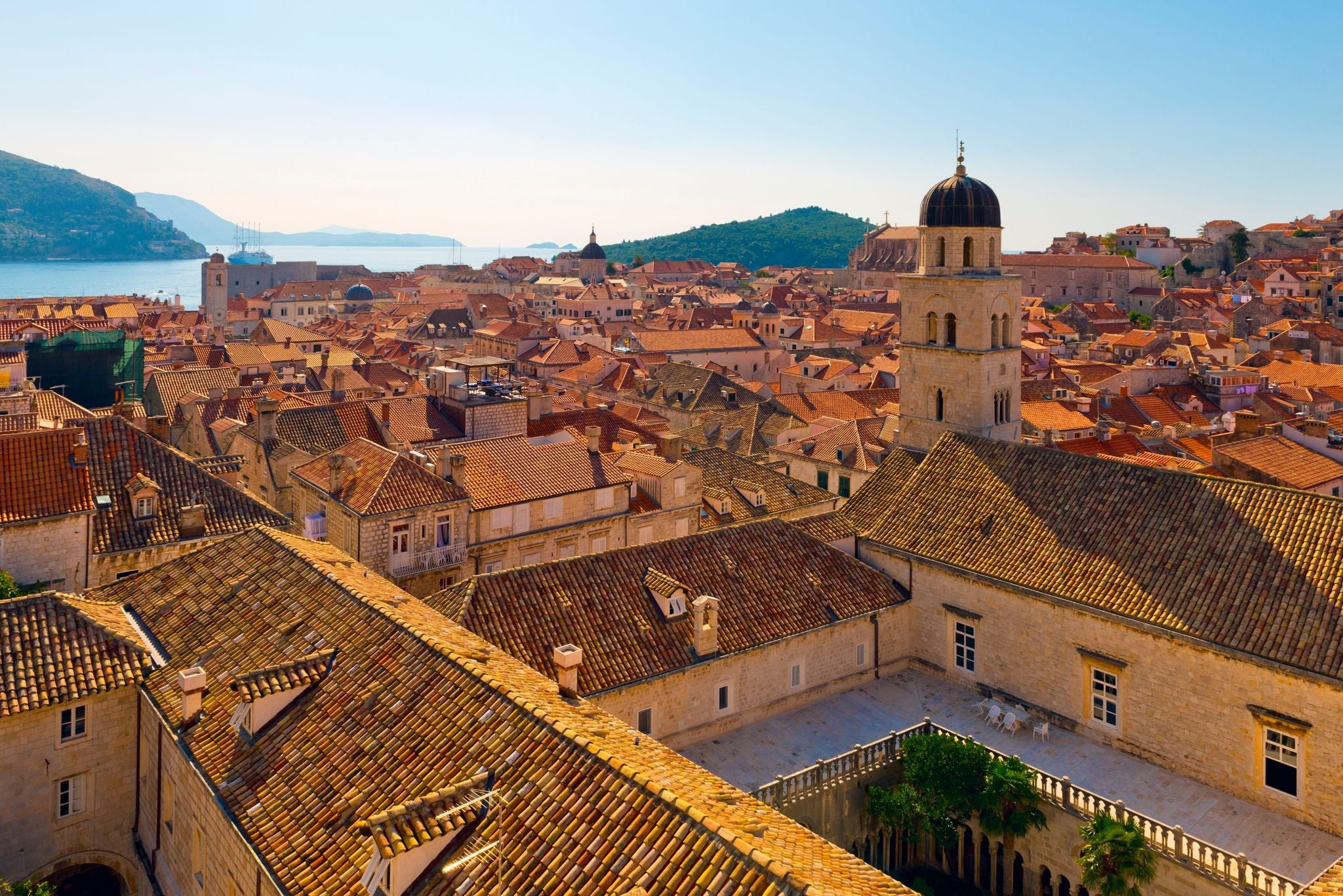
The Dalmatian Coast, stretching along Croatia's stunning Adriatic shoreline, is a treasure trove of historical cities, scenic islands, and breathtaking natural beauty. The best time to visit the Dalmatian Coast depends on the city you want to go.
Each region—northern, central, and southern—offers unique attractions and experiences that captivate travelers year-round. Read more to learn about the best time to experience popular activities in Dalmatia.
Best Time for a Beach Holiday on the Dalmatian Coast
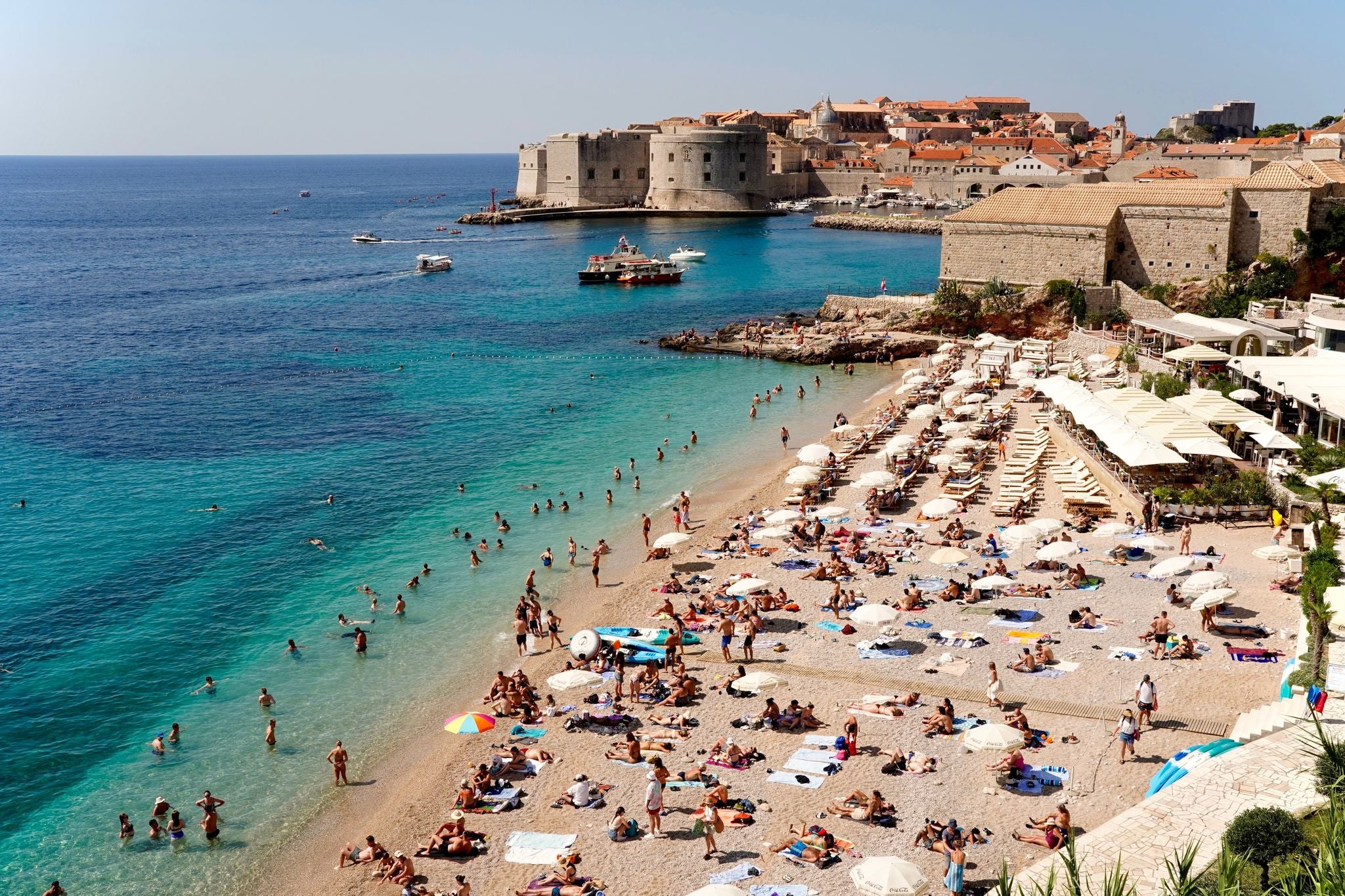
The Dalmatian Coast boasts a glorious Mediterranean climate. The ideal time for beach holidays depends on how you like your sunshine and crowds. If you crave the hottest weather and lively energy of the peak season, then June to August is the best time to visit the Dalmatian Coast.
For bustling activities, consider beach holidays in Dubrovnik. It offers easy access to Banje Beach, Hvar’s party scene, and the peaceful Elaphite Islands. For a more peaceful getaway, beach vacations in Zadar put you near Sakarun Beach, one of Croatia's hidden gems.
If you prefer a peaceful beach experience, the best time to visit Dalmatia is in May or September. During this time, you'll get the best of the Dalmatian Coast. Expect warm seas, sunny skies, and a mix of lively beach activities and quiet spots. You can enjoy peaceful beach holidays in Split and coastal getaways in Rovinj without the crowds.
Best Time To Visit for Cruises in Dubrovnik
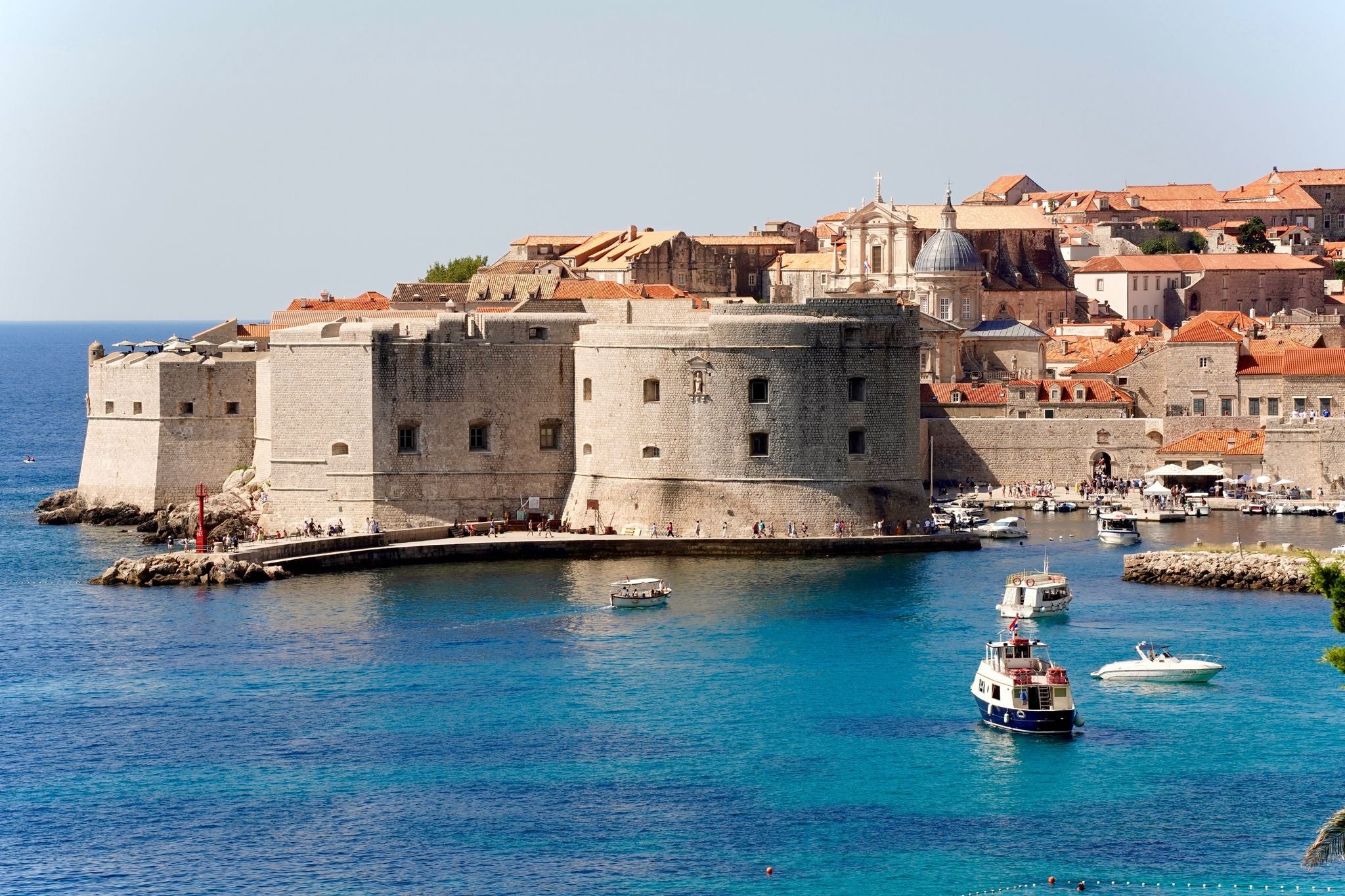
Dubrovnik is a hot spot for cruise ships, especially from June to August. While this is when Dalmatian Coast cruise ships are most frequent, it’s also peak season. You’ll be dealing with large crowds in the Old Town, long lines at the famous Pile Gate, and the possibility of sold-out tours like the popular Game of Thrones tour in Dubrovnik.
Given the limited time on a cruise stop, it’s crucial to visit Dubrovnik when it's less crowded. To make the most of your visit, the best time to visit the Dalmatian Coast for shore excursions in Dubrovnik is May to June and September.
The weather is warm, and the crowds have thinned out, giving you more space to explore the city and enjoy shorter wait times. This timing allows you to fully appreciate the beauty and history of Dubrovnik without the peak season hassle.
Best Time for Honeymoon on the Dalmatian Coast

The Dalmatian Coast, with its breathtaking beaches and dreamy islands, is an ideal honeymoon destination. The best time to visit the Dalmatian Coast for your honeymoon is May or September to October. These seasons offer the region’s most peaceful atmosphere perfect for lovely romantic experiences in Dalmatia.
During these times, you’ll enjoy warm, pleasant temperatures perfect for exploring the Venetian-style town of Trogir near Split and candlelit dinners by the sea. The coast is lush and green in spring, with blooming Croatian irises, while early autumn offers a serene atmosphere with less crowded towns.
Best Time To Visit Dalmatian Islands For Boat Tours
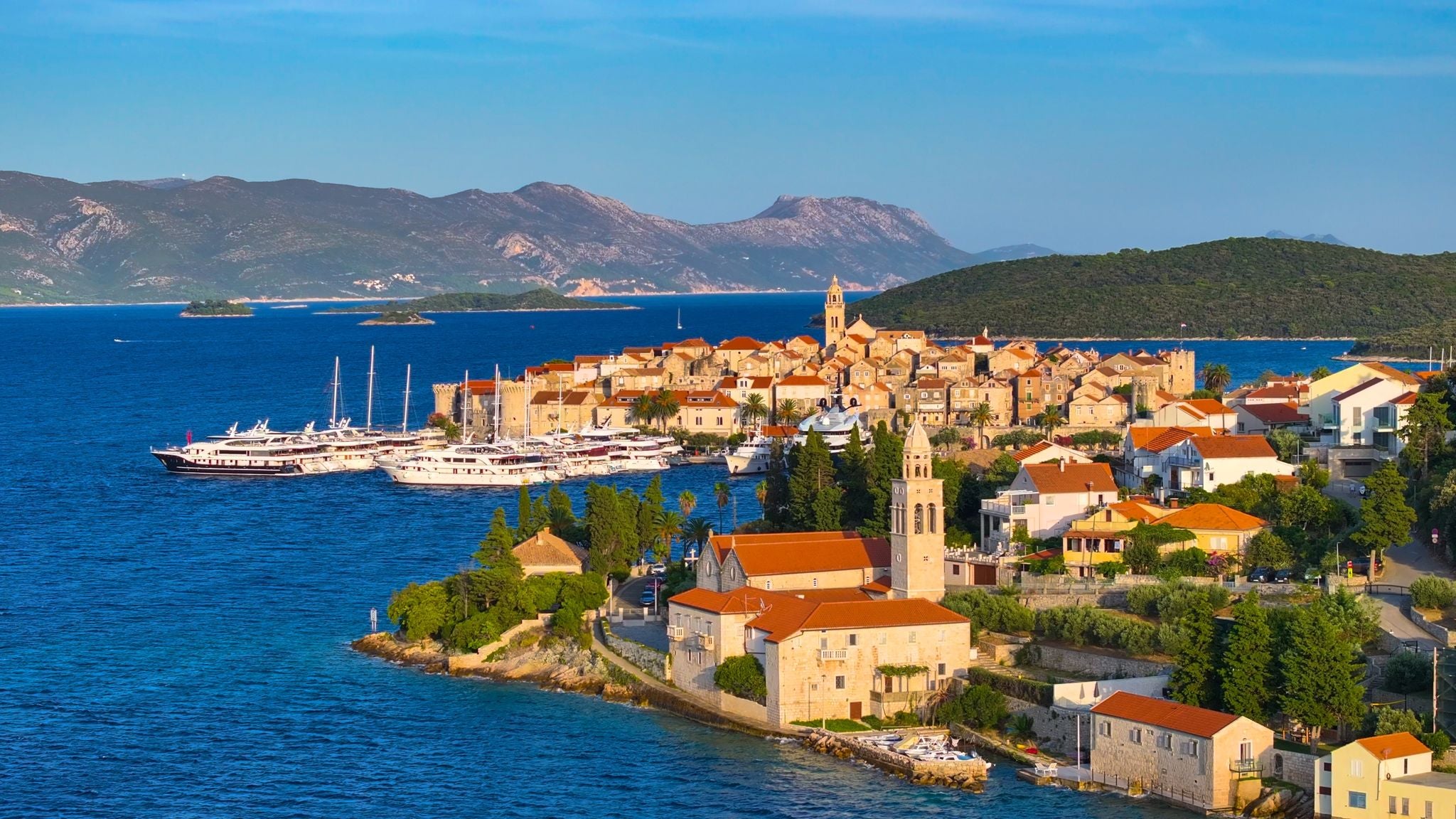
The Dalmatian Coast transforms into an island-hopping paradise between May to September, thanks to the warm sunshine and calm seas. During these shoulder seasons, expect more peaceful beaches, easier access to popular sites, and more scenic sailing tours in Croatia.
The best time to visit the Dalmatian Coast is May to June and September to October, which lets you enjoy a combination of warm weather, calm seas, and fewer crowds. You can enjoy Hvar’s lively nightlife, Brac’s serene beaches, Korcula’s historical sites, Vis’s natural beauty, and Mljet’s tranquil parks without the crowds.
When To Visit Dalmatia To Avoid Crowds

To dodge the crowds, the best time to visit the Dalmatian Coast is from April to May and September to October. It's the perfect time to enjoy the warm weather without plenty of travelers.
Flexibility is key when timing your exploration. Start your day early to visit popular attractions like Dubrovnik's Old Town and Split’s Diocletian's Palace. Late afternoon visits offer a quieter experience after day-trippers leave. For an even more peaceful exploration, plan your itineraries in Split or travel plans in Dubrovnik on weekdays instead of weekends.
Another way to avoid the crowds in Dalmatia is to explore less popular destinations. Instead of sticking to well-known islands like Hvar and Brac, venture to quieter gems like Vis, Solta, or Lastovo. And if you're exploring mainland Croatia, swap the bustling cities for smaller, charming towns like Cavtat, Primosten, or Trogir.
When it comes to accommodations, staying outside the main tourist areas can be a game-changer. Choose less central locations or neighboring towns, like the top accommodations in Trogir, which is just a 30-minute drive from Spit.
By following these tips, you'll be able to avoid the crowds and enjoy a more peaceful visit in the Dalmatian Coast. For the best experience, you can check out the wide selection of vacation packages in Dalmatia or easy planning and access to top attractions.
FAQs About the Best Time To Visit the Dalmatian Coast
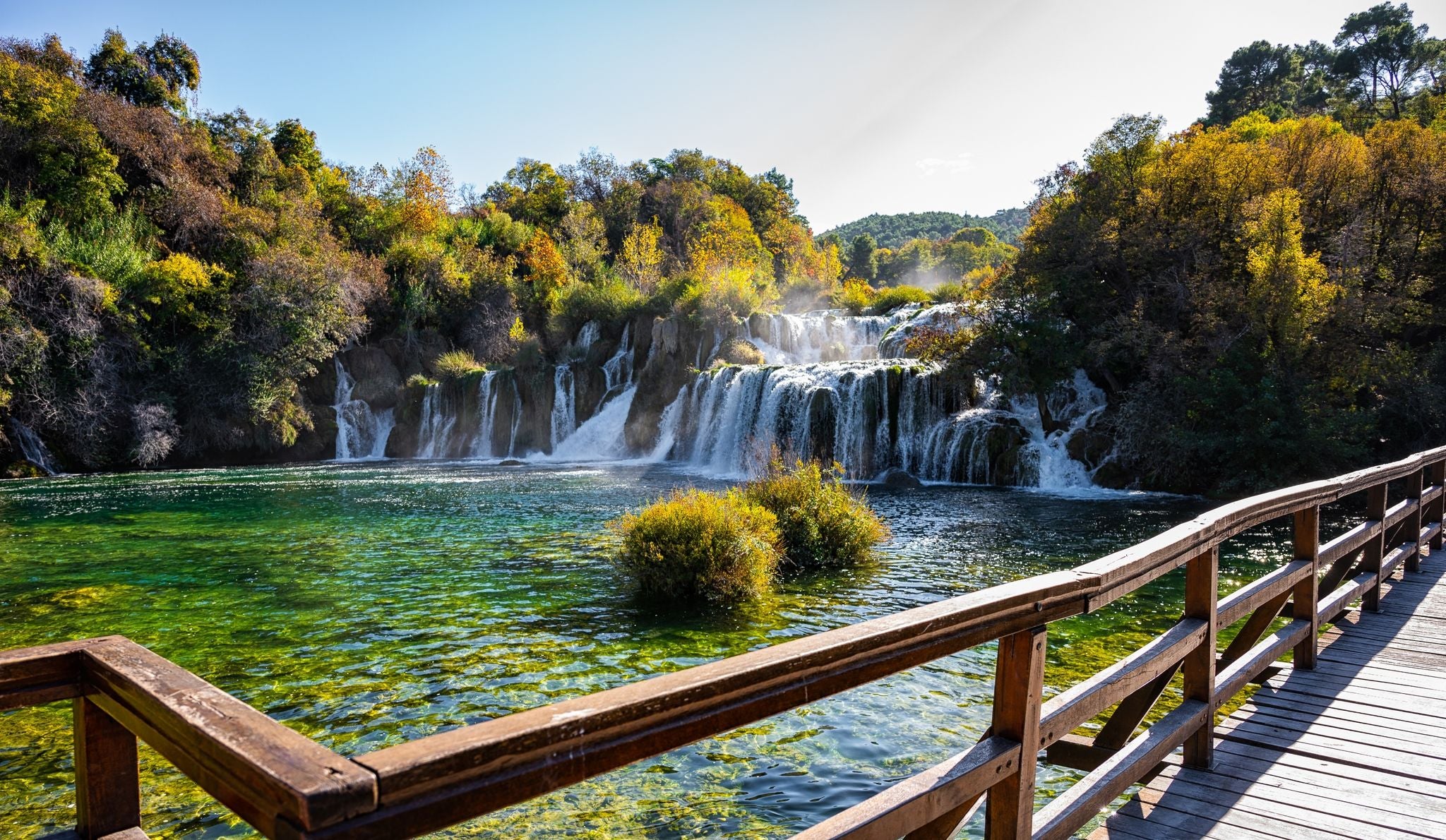
How long should I spend on the Dalmatian Coast?
The ideal length of your stay on the Dalmatian Coast depends on what you want to experience. Generally, a trip of 7 to 10 days is recommended to fully appreciate the Dalmatian Coast’s beauty and attractions. This allows you to explore several towns and cities along the coast, spend more time island hopping, and delve deeper into a few chosen islands.
A 3-5 day stay offers a glimpse of the Dalmatian Coast, focusing on major cities like Dubrovnik or Split and island hopping to the Elaphite Islands. This brief visit is perfect for those wanting a quick but immersive experience of the Dalmatian Coast. If you have more time, consider extending your stay to explore Sibenik and Trogir.
Plan your visit based on your interests and time, and enjoy everything this beautiful region offers.
What is the cheapest time to visit the Dalmatian Coast in Croatia?
The best time to visit the Dalmatian Coast in Croatia for an affordable getaway is from November to March. Except during the holidays in December, you'll enjoy the lowest prices on flights and accommodation. You can enjoy the entire region with minimal crowds, letting you explore popular destinations like Dubrovnik and Split without the hassle.
While the weather might be cooler and some seasonal activities may have limited availability, visiting Dalmatia in winter is a unique experience. Just be sure to pack appropriately for the cooler temperatures and check the operating hours of key attractions and activities.
What is the best month to visit the Dalmatian Coast for good weather?
The best month to visit the Dalmatian Coast for good weather is September. While September might not be the hottest month, it offers a balance of comfortable weather and a peaceful vibe. It's perfect for travelers who want to enjoy swimming, snorkeling, or diving in crystal-clear waters without the intense summer heat.
In September, the crowds start to thin out, creating a more relaxed atmosphere for exploring towns and historical sites. Take advantage of the fewer crowds and explore the historic cities of Dubrovnik, Zadar, and Split, as well as the stunning islands of Hvar, Brac, and Vis.
When is the best time to visit the Dalmatian Coast in Croatia for a family vacation?
The best time to visit the Dalmatian Coast in Croatia for a family vacation is May or September. Compared to summer, you'll find less crowded attractions, such as Dubrovnik's Old Town, Pupnatska Luka Beach in Korcula, and the Blue Cave in Bisevo.
Additionally, flights and accommodations are often more affordable during these months than during the high summer season, helping you better manage your family vacation budget.
